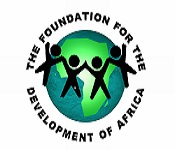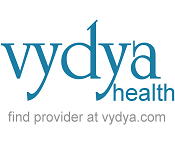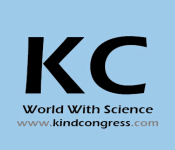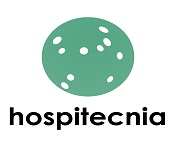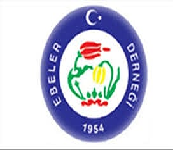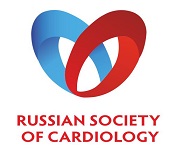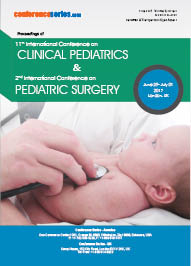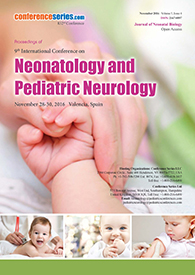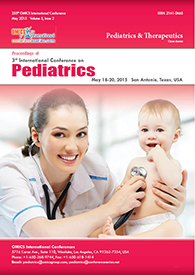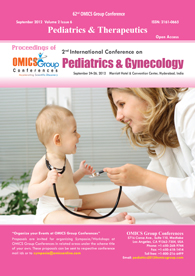Theme: Consolidating Knowledge and Recent Innovations in Nursing and Healthcare
Nursing and Healthcare 2018
- About Nursing and Healthcare 2018 Conference
- Sessions/Tracks of Nursing and Healthcare 2018
- Market Analysis of Nursing and Healthcare 2018
- New Updates: Nursing and Healthcare 2018
- Related Conferences
- Past Conference Report
NURSING AND HEALTHCARE 2018 Congress
We honored to welcome you to “Annual Nursing Congress: The Art of Care” to be held in Istanbul Turkey during November 12-13, 2018 with a theme of Consolidating Knowledge and Recent Innovations in Nursing and Health Care.
Annual Nursing Congress: The Art of Care is the global platform for nursing students, faculty, researcher’s deans and leaders to collaborate on topics affecting nursing. Attendees can take advantage of opportunities to learn about Nursing and Healthcare from a variety of oral and poster presentations.
The conference is going to held by seminars, symposium, oral presentation, workshops, the introduction of most recent treatment developments in the field of Nursing and Healthcare.
Healthcare & nursing committed to create a reliable contributions to the scientific community for organizes 300+conferences across USA , Europe, Canada, Mexico Europe, Georgia, middle east, and Asia for every year with support of more than 1000 additional scientists societies and publishes 900+open access journal which contains over thousand eminent personalities, putative scientists as editorial board members
Target Audience
-
Scientists
-
Doctors
-
Professors
-
Medical colleges
-
Nurse practitioner
-
Nursing Lecturers
-
Nurses
-
Healthcare Industries
-
Pharmaceutical industries
-
Directors of Association and Societies
-
Researchers, Training Institutes
-
Healthcare faculty
Benefits
-
Accepted abstracts will be published in the journal of nursing
-
The global platform for global networking to transferring and exchanging ideas
-
A unique opportunity for advertisers and sponsors at this international event
Nursing importance
The interest for medicinal chaperons is required to increase by 2% reliably, out and out outpacing the supply by 2020. Only for the specialization, there is an extended interest for particular nursing experts.
In excess of 700,000 openings are guess between now and 2020. In recent research, it is discovered that Nursing is in the fourth position by thinking about the summary of occupations in the US with the most vital number of work openings. Interest for attendants is anticipated to increment by 2% consistently. 90% of whole deal mind workplaces require enough nursing staff to give basic thought.
Who to attend ??
Annual Nursing Congress: The Art of Care joins individuals who have an enthusiasm for different fields of nursing like Physichiartic, pediatrics, surgical care, geriatric care, gerontology, mid-wifery, Hospice, Palliative care, Dermatology, tumor, cardiovascular, fundamental care, grown-up and women prosperity, pediatric and emergency nursing, birthing help, general prosperity, social protection and arrangement from preparing, investigate, association, methodology, and direction. It is a social event to explore issues of innovations and moreover, exchange data, share evidence, thoughts, and generate solutions
Track 1: Nursing and Healthcare
Nursing and Healthcare mainly focuses on the protection, optimization and balancing of health and abilities, prevention of illness and injury, facilitation of healing, and aiding the patients through the diagnosis and treatment of human response, and advocacy in the care of individuals, families, groups, communities, and populations. Nursing and healthcare deals with various aspects such as primary health, secondary health care etc., Pregnancy care is the essential care that is needed most of the women which consists of prenatal and postpartum healthcare for expectant mothers. It involves treatments and training to ensure a healthy pre pregnancy, pregnancy, and labour and delivery.
-
Public Health
-
Nutrition and Dietetics
-
Health research
-
Genetic disorders
-
Neurological disorders
-
Treatment of chronic diseases
-
Advances in pharmaceutical packaging
Track 2: Cardiovascular Nursing
Cardiovascular Medical attendants assume a key part in the assessment of Cardiovascular Status, Monitoring the Hemodynamic Functions and Disease Management. This module plans to give nurture the learning and aptitudes to be skilled, sheltered and compelling carers of patients giving cardiovascular medical issues. Medical caretakers need to comprehend of flow prove based practice and rules identifying with heart ailment administration. This module gives a diagram of current practice in the cardiovascular administration of patients/customers and talks about the part of medical attendants in guaranteeing conveyance of inciting, compelling and safe care to the gathering of patients. Cardiac nurses perform postoperative care on a surgical unit, stress test evaluations, cardiac monitoring, vascular monitoring, and health assessments.
-
Cardiac Arrhythmias
-
Cardiac Arrest and Heart Failure
-
Heart Transplantation
-
Angina Pectoris
-
Cardiomyopathy
-
Congenital Heart Disease
-
Blood and it's Important
Track 3: Pediatric Nursing
A Pediatric nurse is a nursing field which mainly works in the field of pediatrics.the important role of pediatric nurses is to administer directly procedures and medicines to children according to prescribed nursing care plans. Pediatric nursing help provide health/medical care for young children from when they are born until they are teenagers. People seem to think children are just small adults, this could not be more wrong especially when it comes to the changes in their bodies and health. Because children’s bodies are still growing and developing they need different things than an adult body does. A healthy mind, a healthy body and proper health care are very important in children. By having regular check-ups for growth and development, and taking care of any illnesses or issues that arise. Pediatric nurses and doctors can help children grow up strong and healthy.
-
Pediatric Mental Health
-
Obesity-Health Risks
-
International Child Health
-
Pediatric Nutrition
-
Pediatric Palliative Care
-
Pediatric Respiratory Care
-
School Nursing
Track 4: Education and Management in Nursing
Nursing training is focused on enhancing the nature of watch over the malignancy understanding through the instruction of the expert nursing group. Medical attendants are facing the complexities of care and propelled innovation-enabling them in more noteworthy numbers to contribute definitively on groups, comprehend wellbeing approach, break down data to settle on basic choices, and bolster the prosperity of all. Procedures that are dealt with by an association's medical caretaker administration group incorporate staffing, arranging, designating assignments, coordinating others, and arranging. Enrolled nurture normally experience encourage instruction with a specific end goal to move into administration level positions.
-
Innovation in Nurse Education
-
Evidence-Based Teaching and Learning
-
Graduate Nursing Education Reform
-
Quality and Safety of Nursing Care
-
Nursing Outcome Study
Track 5: Innovation in Nursing
Future developments in advancements in nursing care, huge data particularly, will focus on the aggregate and change of patient data into basic finding that can improve tranquil and money related outcomes. Today, unique human services affiliations are looking to the future and considering gasification as a way to deal with oversee create appoint engagement, joint effort, and efficiency, in addition, to change their direction to more conspicuous business targets. In light of this dedication, it's important to take care of the issue identified with the lack of medical caretaker staff and nursing research, the point of this collaboration to help for such the development of Evaluating Innovations in Nursing Education (EIN) to subsidize assessments of nursing instructive interventions. Nurses are motivated to engage in innovative practices mainly because they seek to enhance patient experiences, health outcomes and nursing practice.
-
Increased efficacy in nursing
-
High-fidelity simulation
-
Simulation and personal digital assistants
-
Development of culture supporting risk-taking
-
Development of creativity and excellence
Track 6: Hospice and Palliative Nursing
Hospice and Palliative Care is the proficient, master and delicate care of people living with an extreme, consistent disease when cure is surprising. This is comprehensive in nature – watching over the ''entire'' individual and their family. The objective of hospice and palliative care is to help and propel personal satisfaction for those in the last phase of living, and their families.To improve palliative nursing practice, it is essential to discern the unique contribution of palliative nursing to the field of palliative care.
-
Palliative Care and Assisted Dying
-
Palliative and Geriatrics
-
Palliative Care and Symptom Management
-
Palliative Care and Nursing
-
Pediatric palliative care
Track 7: Wound Care Nursing
Sometimes referred to as wound, ostomy, and self-control (WOC) attendants, spend significant time in wound administration, the checking and treatment of wounds because of damage, infection or therapeutic medications. Their work advances the sheltered and fasts recuperating of a wide assortment of wounds, from ceaseless bed bruises or ulcers to abscesses, bolstering tube destinations and late surgical openings. The greater part of wound care medical caretakers work in doctor's facilities, nursing homes or go to patients' homes as home wellbeing labourers.The wound care nurses will treat, and create care plans for patients with very complex wounds, ostomies, and continence conditions.
-
Wound Care and Infection Control
-
Wound Care and Dressing
-
Wound Care and Treatment
-
Rheumatology
Track 8: Travel Nursing
Travel Nursing is a nursing task idea that created in light of the nursing lack. This industry supplies medical attendants who go to work in transitory nursing positions, for the most part in healing facilities. While travel nursing customarily alludes particularly to the nursing calling, it can likewise be utilized as a sweeping term to allude to an assortment of movement human services positions, including active recuperation, word related treatment, discourse dialect pathology and even specialists and dental practitioners. It is a variety of travel in healthcare positions, including physical therapy, occupational therapy, speech-language pathology and even doctors and dentists.[1]
-
Professional Association of Nurse Travellers
-
International Travel Nurse
-
Pre Hospital Care
Track 9: Emergency and Disaster Nursing
Emergency Nursing might be a forte amid which attendants deal with patients inside the crisis or essential segment of their evil wellbeing or damage and square measure adroit at recognizing major issues, organizing the direness of care, rapidly and successfully finishing up resuscitative measures and elective treatment, acting with a high level of self-sufficiency and expertise to start required measures while not outside bearing, instructing the patient and his family with the information and passionate help required to protect themselves as they manage a substitution reality. Emergency nurses must be ready to treat a wide variety of illnesses or injury situations, ranging from a sore throat to a heart attack.
-
Disaster Management Cycle
-
Emergency Care Across the Age Spectrum
-
Disaster and Humanitarian Aid
-
Disaster Response
-
Emergency Trends in Technology, Teaching and Clinical Practice
-
Managing Ethical Dilemmas
-
Care of Patient and Family in Emergency Crisis
-
New innovative ideas and research in emergency nursing
Track 10: Surgical Nursing
Surgical an attendant who spends significant time in perioperative care, which means mind gave to surgical patients previously, amid, and after surgery. There are various types of the surgical medical attendant and surgical nursing as a profession can be exceptionally requesting. In pre-agent mind, a surgical medical attendant readies a patient for surgery, both physically and inwardly. Surgical attendants may disclose the strategy to the patient, and straightforwardness fears about the up and coming surgery and recuperation. They likewise check the patient's vitals, regulate drugs, and help to clean and stamp the surgical site.Surgical nurses can most often find employment in hospitals with surgical wards and operating rooms, as well as trauma and emergency care centers.
-
Plastic Surgery
-
Transplant Surgery
-
Latest Advancements in Surgery
-
General Surgery and its Specialization
-
Cardiac Surgery
-
Surgical Oncology Nursing
-
Gynaecological Nursing
Track 11: Diabetes and Dermatology Nursing
Diabetes Medical attendants administer to patients that experience the ill effects of diabetes, a condition that influences the body's capacity to deliver or assimilate enough insulin. This incorporates helping patients in observing their glucose and medicines, limiting diabetic nerve harm, directing dietary treatment, managing psychosocial issues and behavioural administration. Medical attendants in dermatology furnish patients with care and training concerning the treatment of wounds, wounds, infections and states of the skin. These attendants can screen for skin growth, help with dermatological surgery, educate, direct research and perform such strategies as biopsies, mesotherapy, microdermabrasion and synthetic peels. The field of dermatology is unbelievably huge, as a skin is an organ, much the same as the heart or kidneys and quantity of ailments and clutters are similarly as various as with different organs of the body
-
Diabetes Management
-
Diabetes Research
-
Clinical Trials in Diabetes
-
Genetics and Diabetes
-
Medical Dermatology
-
Cosmetic Dermatology
-
Research in Dermatology
-
Skin Cancer
-
Surgical Dermatology
Track 12: Gerontology Nursing
Gerontology Nursing is the solid purpose of nursing relating to more settled grown-ups. Gerontological remedial supervisors fill in as a gathering with more settled grown-ups, their families, and social events to help solid growing, most exceptional working, and individual satisfaction. The term gerontological nursing, which supplanted the term geriatric nursing in the 1970s, is viewed as being all the more obvious with the recognizing quality more wide spotlight on flourishing and prosperity, regardless of suffering. Gerontological nursing is essential to meet the success needs of a creating mass. Because of longer future and declining riches rates, the level of the majority that is viewed as old is developing.
-
Oral Health
-
Medication and Nutrition in Elderly
-
Geriatric Oncology
-
Depression and Dementia
-
Gerontology and Palliative Care
Track 13: Psychiatric Nursing
Mental and passionate wellbeing support is a strong point in nursing.Mental health enrolled restorative overseers work with individuals, families, social occasions, and gatherings, looking for their passionate prosperity needs. The PMHN develops a nursing conclusion and plan of care, executes the nursing strategy, and evaluates it for sufficiency. Psychological wellness Advanced Practice Registered Nurses (PMH-APRNs) offer fundamental care organizations to the psychological passionate prosperity masses. PMH-APRNs review, break down and treat individuals and families with mental diffuses or the potential for such messes using their full degree of helpful capacities, including the arrangement of medication and association of psychotherapy. PMH-APRNs consistently guarantee private practices and associations and what's more advice with social events, gatherings, authorities, and associations. A rationally therapeutic escort can get the chance to have accomplished a four-year school preparing in nursing to finally twist up an (RN) and have sensible capacity in mental thriving. The degrees amendment in changed nations and, check government headings. Rationally masters incorporate recovering office, mental foundation, mending establishments and distinctive absolutely interesting work environments
-
Psychiatric Disorder
-
Clinical Psychology
-
Translation Psychology
-
Anxiety and Steep Disorders
-
Assessments and Evaluation of Mental Health
Track 14: Gynaecology and Obstetrics Nursing
Gynaecology Nursing, in like manner called perinatal nursing, is a nursing distinguishing strength that works with patients who are attempting to twist up recognizably pregnant, are by and by pregnant, or have started late passed on. Obstetrical medicinal guardians help give pre-birth care and testing, care of patients experiencing pregnancy complexities, mind in the midst of work and transport, and care of patients following movement. Obstetrical restorative overseers work personally with obstetricians, birthing masters, and specialist. They similarly give supervision of patient care specialists and surgical technologists.
-
Advances in Gynecology
-
Physiology of Menstruation and Ovulation
-
Normal Pregnancy, Labour and Puerperium
-
Lactation Support
-
Operative Gynaecology
-
Pregnancy Care and Delivery
Track 15: Oncology Nursing
PrimaryCare and Cancer Nursing is a care delivery system that supports a professional nursing practice. Within Primary Nursing, a therapeutic relationship is established between a Registered Nurse and an individual patient and his or her family. Cancer nursing and oncology is the field of medicine that is devoted to cancer. Clinical oncology consists of three primary disciplines: Medical oncology, surgical oncology, and radiation oncology. Globally there are 345 international and national cancer associations. Oncology nurses must have appropriate training in the administration, handling, side effects, and dosing of chemotherapy.
-
Surgical Nursing
-
Pediatric Nursing
-
Hemotherapy Biotherapy
-
Radiation Therapy
-
Addictions Nursing
-
Oncology-Diabetes in Control
-
Cancer Nursing Partnership
Track 16: Veterinary Nursing
veterinary medical attendants are fundamental to the running of a fruitful veterinary practice and are in charge of working with the veterinary specialist to give care and treatment to a wide range of creatures, for example, pooches, felines, and rabbits. Being a vet medical caretaker can be testing; the part once in a while includes long and unsociable hours, however the feeling of reason that originates from nursing an evil creature back to wellbeing, and the dependable fellowships cultivated while filling in as a component of an affectionate group, make turning into a veterinary attendant a beneficial aspiration.
-
Veterinary Critical care
-
Infection Control in Veterinary Nursing
-
A principle of Veterinary Nursing Emergency
Track 17: Women Health and Midwifery Nursing
Women’s wellbeing information covers bosom, tumour, heart, pregnancy, sexual wellbeing, and develops ladies related conditions. Ladies' Health Care expects to keep wellbeing and therapeutic research, especially the Society for Women's Health Research, including coronary illness. Medical caretaker birthing assistance offers a wide assortment of expert profession pathways. Medical caretaker Midwifery give essential and gynecologic care to ladies and in addition, forte look after expecting moms and their new-born children. Medical attendant birthing assistants are known for their proof based care. Notwithstanding the conceptive science, understudies look at the impacts of culture; custom and the social, financial and political powers that impact the strength of ladies
-
Women’s Reproductive Health Care
-
Midwifery Care: Labour and Newborn
-
Nursing Care During Childbirth
-
Obstetric and Gynecologic Malignancies
-
Ambulatory Care for Women
-
Endometriosis and its Management during Pregnancy
Track 18: Community Nursing
Communities are battling with a large number of individuals over the life expectancy, which get negligible or no social insurance since they can't bear the cost of or get to administrations. Medical caretakers have dependably tended to people, families, and groups in their training. As of late, there has been an expansion in quantity of medical attendants working outside the healing centre, fundamentally in group construct settings that concentration in light of people and families. There is additionally expanding accentuation on nursing care with the group as the customer. The number of inhabitants in maturing and incessantly sick patients is expanding, and, combined with the unpredictable social states of today, has prompted sick wellbeing, which builds clinic mind costs. Proficient wellbeing administrations are not fit for taking care of the regularly expanding requests for medicinal services in this changing well-being society.
-
Health Challenges in the New Century
-
Patient Safety and Non-technical Skill
-
Research and Education
-
Advanced Practice
-
Community Resilience
-
Community Preparedness
-
Emergency Care Across the Age Spectrum
Market and Aspects of NURSING AND HEALTHCARE 2018 Congress
Nursing and Healthcare congress 2018 invites participants, moderators, and exhibitors from everywhere throughout the world to Istanbul turkey. We are enchanted to welcome all of you to be present at the "Annual Nursing Congress: the Art of Care" which will be held during November 12-13, 2018 in Istanbul turkey. The arranging panel is preparing for new innovations and educational gathering program including whole addresses, symposia, workshops on an assortment of points, notice introductions and different projects for members from everywhere throughout the world. We welcome you to go along with us at the nursing meeting, where you will make certain to have an important involvement with researchers and scientists from around the world.
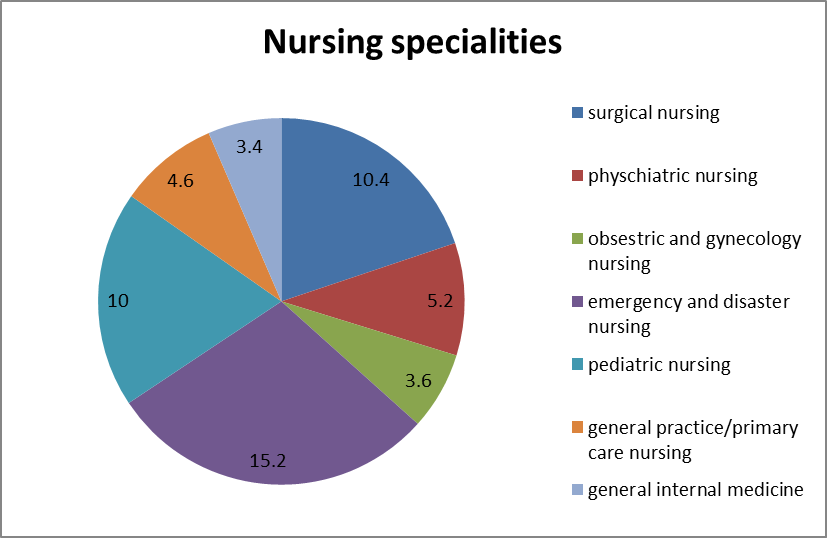
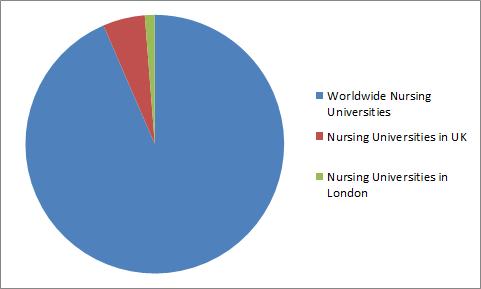
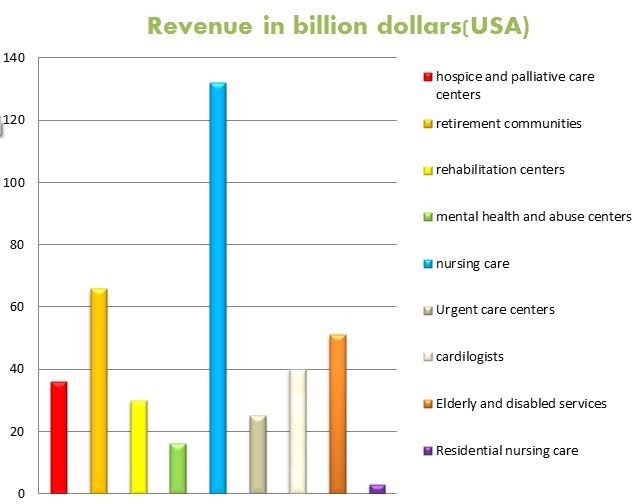
Why to Attend??
Annual Nursing congress: The Art of Crae gives a global platform for global networking to exchanging trading thoughts and most recent advancements in Nursing and Healthcare. Offering opportunities to go to the introductions conveyed by famous specialists from everywhere throughout the world .participating in Nursing and Healthcare conferences gives an approach to meet, cooperate with, and make contacts with different specialists in your claim to fame territory.
Why Turkey??
Turkey is found boarding western Asia and Southern Europe. Because of its geo-politically key region straddling landmasses of Europe and Asia, Turkey has seen long been a hub of trade and social trade. The locale of the country is to some degree greater than the US region of Texas or 2.5 times as generous as Italy. Turkey's Economy is growing driven by organization and industry fragment, with cultivation accounting around 25%. The capital city is Ankara, the social and Economic capital is Istanbul. Turkey is situated tenth most surely understood tourism objectives on the planet. Turkey has two of the seven wonders of the old world which are The Mausoleum at Halicarnassus and The Temple of Artemis. Antalya is a city on the Mediterranean of south-western Turkey. It is Turkey's greatest general sea resort, put on the Turkish Riviera.
Brain Shrinks during pregnancy
From the moment a developing embryo implants in the womb, a woman’s body begins to undergo a slew of changes. Some are immediately apparent to the mom-to-be a growing belly, fatigue, mood swings, and morning sickness, among others. What may not be so obvious are the changes happening in her brain those adaptations included changes to the structure and function of the woman’s brain too.
Comparing MRI images taken before women became pregnant with images taken after they had given birth; the researchers found pregnancy shrinks the brain’s gray matter, the pinkish-gray tissue containing the cell bodies and synapses of nerve cells. The volume loss persisted for at least two years after childbirth.
The areas of the brain that shrunk the most were those involved in social cognition, the ability to figure out what someone else is thinking and feeling. When a new mom was shown a picture of her baby, these areas of the brain lit up with activity. Enhanced social cognition might help a mother take care of her baby, enabling her to decode the child’s various coos and cries and figure out what she needs.
Improvements in social cognition might come at a cost. While studies looking at cognitive changes during pregnancy and the postpartum period have produced mixed results, many women report experiencing memory problems, a phenomenon termed “pregnancy brain.” Spatial memory, for example, might suffer late in pregnancy because it’s not critical for offspring survival during that time. Instead, the body redirects energy and resources to caring for the baby.
Hormones like estrogen, progesterone, and others most likely drive the changes in the brain structure and function during pregnancy. Hormones can exert a powerful influence on brain cells, and no time in a person’s life produces more extreme hormone fluctuations than pregnancy. Yet, researchers have largely neglected how pregnancy and its hormone surges shape the brain — in the last century there have been only a few dozen studies exploring pregnancy’s impact on women’s brains.
Laser dentistry
Laser dentistry can be a precise and effective way to perform many dental procedures. The potential for it to improve dental procedures rests in the dentist’s ability to control power output and the duration of exposure on the tissue (whether gum or tooth structure), allowing for treatment of a highly specific area of focus without damaging surrounding tissues.
If we consider our self somewhat of an anxious dental patient and are seeking extreme safety and comfort, you might consider looking for dentists who have incorporated laser techniques into their practices and treatments. It is estimated that 6 percent of general dentists own a laser for soft-tissue applications, with that number expected to increase over time.
As the applications for dental lasers expand, greater numbers of dentists will use the technology to provide patients with precision treatment that may minimize pain and recovery time.
Types of Dental Lasers
The Food and Drug Administration (FDA) has approved of a variety of hard and soft tissue lasers for use in the dental treatment of adults and children. Because dental lasers boast unique absorption characteristics, they are used to perform specific dental procedures.
Hard Tissue Lasers: Hard tissue lasers have a wavelength that is highly absorbable by hydroxyapatite (calcium phosphate salt found in bone and teeth) and water, making them more effective for cutting through tooth structure. Hard tissue lasers include the Erbium YAG and the Erbium chromium YSGG. The primary use of hard tissue lasers is to cut into bone and teeth with extreme precision. Hard tissue lasers are often used in the “prepping” or “shaping” of teeth for composite bonding, the removal of small amounts of tooth structure and the repair of certain worn down dental fillings.
Soft Tissue Lasers: Soft tissue lasers boast a wavelength that is highly absorbable by water and hemoglobin (oxygenating protein in red blood cells), making them more effective for soft tissue management. Commonly used soft tissue lasers include Neodymium YAG (Nd:YAG) and diode lasers, which may be used as a component of periodontal treatment and have the ability to kill bacteria and activate the re-growth of tissues. The carbon-dioxide laser minimizes damage to surrounding tissue and removes tissue faster than the fiber optic method. Soft tissue lasers penetrate soft tissue while sealing blood vessels and nerve endings. This is the primary reason why many people experience virtually no postoperative pain following the use of a laser. Also, soft tissue lasers allow tissues to heal faster. It is for this reason that a growing number of cosmetic dental practices are incorporating the use of soft tissue lasers for gingival sculpting procedures.
Some dental laser technology has been developed that can be used to generate both hard and soft tissue laser energy, depending upon the patient’s needs.
In addition to the lasers used for cutting and shaping hard and soft tissues, other laser types are specifically designed for viewing the insides of teeth and cells using Optical Coherence Tomography, a non-invasive imaging technique. Other lasers provide energy and specific proteins that help move messages between cells to match the body’s natural ability to use light spectrums to heal damaged cells.
Telehealth Innovations
Besides technology development, other activities will contribute to innovations in telehealth for training, education, and research. Patterns of healthcare delivery need to change in order to incorporate the benefits of telehealth applications. For example, tele training programs such as Antenatal and Neonatal Guidelines, Education, and Learning System and Peds PLACE, a combined obstetrical and pediatric telemedicine to outreach the program that connects with hospitals throughout the state of Arkansas with each other and the single academic medical center through weekly telemedicine conferences and 24/7 consultation, can reduce unnecessary costs while improving community health outcomes. Developers need to listen to healthcare and research professionals and organizations in order to understand their needs for tele training and tele research. Strategic partnerships with industry are key to development of novel applications.
Research at the intersection of computational mechanics, real-time computing, computer graphics, and computer haptics is key to the development of novel computational technology for real-time surgical simulation with visual and touch feedback. Technically, there is a need for network architectures that support multiple simulation users through direct interfaces with computer clouds. Examples linked to telehealth include the development of the Software Framework for Multimodal Interactive Simulations, a research resource that allows rapid development of networked interactive environments with real-time graphics and haptics; a hybrid network architecture that allows client-server as well as peer-to-peer communications for better synchronization; an environment where surgical students, geographically separated, can collaboratively learn and interact with specialists; tele mentoring environments where trainees may be “hand held” by geographically separated experts; and tele surgical planning environments where experts who are geographically separated may collaborate to plan a surgery. In addition, implementation and access to dynamic circuit networks technology should improve both network utilization and user experience.
There is wide agreement that formal evaluation of telehealth technologies is necessary to assess their effectiveness in real-world conditions. However, outcomes research studies are complex activities that require time, effort, and attention to detail. In order to bring the benefits in telehealth to the user in a timely fashion, outcomes research studies should be designed, implemented, and analyzed with utmost care so that they can readily provide the evidence required by users and policy makers.
Scoliosis: Braces for Kids
Most of the people are suffering from scoliosis, a sideways curvature of the spine. It includes approximately 2 to 3 percent of adolescents who are diagnosed each year with idiopathic scoliosis, which is usually identified during puberty and progresses until skeletal maturity. One in out of 500 children today requires treatment using spine braces and 1 in 5,000 need spinal surgery. This typical spine brace is made up of rigid plastic that fits trunk and hips and applies counter-pressure on the spine's abnormal curve around the child, based up on that pressure and support on the curve from outside will stimulate more normal growth of the spine.
The rigid braces have several shortcomings they "freeze" the child's upper body and limit movement to such an extent that users often avoid wearing the brace. And as the child grows, the required external forces to correct the abnormal posture change along the length of the curve and over the course of treatment. It is having the flexibility to move when wearing a spinal brace while still applying corrective forces would be a very useful feature for both patients and physicians.
One professor of mechanical engineering and of rehabilitation and regenerative medicine is working on solving about this problem. The professors are started to develop a dynamic spine brace that is more flexible than the rigid braces now in use.
Most of the children are used to take a rigid brace to treat scoliosis, the patients undergo spinal fusion surgery, so this will make a big difference, If new design make then it will be flexible brace and modulates and it is corrective forces on the spine in desired directions while still allowing the users to perform typical everyday activities, we will bring revolutionary change to the field.
They already developed prototype wearable spine braces that consist of rings that fit on the human torso. These types of rings are dynamically actuated by servomotors placed on adjacent rings to control the force or position applied on the human body. Onboard sensors record the force and motion data and transmit the information to a host pc for monitoring and adjusting the treatment. They have additionally advances that are a second brace that is fully passive, make of compliant components able to adjust stiffness in specific directions. However, both these braces have drawbacks. This dynamic brace needs an active power source while the passive brace but it cannot provide active controls.
The team, which is drawn together experts in robotics and pediatric orthopedics, plans to test all three types of braces on children with scoliosis. Preliminary experiment have started characterize the feasibility of the dynamic braces on healthy subjects with normal spines to characterize the body's stiffness in different directions during sports of daily living.
Scoliosis impacts the quality of life of these affected, limiting their activity, causing pain, and diminishing their esteem. This will transform treatment due to the ability of the brace to modulate force or position at specific locations of the spine and will greatly improve the quality of life for children with this debilitating condition.
Skin diseases and socioeconomic factors
The skin diseases in developing countries are associated with socioeconomic factors. It is generally agreed that a public health approach to dermatology in this setting is particularly appropriate but, there has been little epidemiologic research are going to examine which particular socioeconomic factors are important to determinants of the prevalence of skin disease.
A survey of villages involved randomly selected some households using a questionnaire, measurements of houses and water quality, and examination of the skin to household members.
Significant skin disease was encountered in 26.9%. Transmissible diseases comprised the many of skin diseases with73.9% of younger age groups being affected most. Socioeconomic conditions were poor, with low quality, crowded housing, low levels of literacy, unsatisfactory water sources, and few households with a regular cash income. Household density is significantly associated with transmissible skin disease and other indicators of poverty (e.g., no regular cash income and illiteracy) did not correlate with the prevalence of skin disease.
Skin disease is more commonly seen in the villages, especially transmissible diseases in the younger age groups. Household density is the only socioâ€economic factor significantly associated with skin disease. Reduction of household density is an attainable intervention that will reduce the prevalence of skin disease in rural populations. Simple studies like this one should be the first step in community dermatology, assessing the burden of skin disease in communities and looking for particular factors with which public health interventions will effectively reduce the prevalence of skin disease.
Innovations in Chronic Wound Management
Chronic wounds, such as venous leg ulcers, have a devastating effect on quality of life and can lead to loss of independence and social isolation. It is estimated that the prevalence of chronic wounds is growing at the rate of around 12% a year and these wounds have a substantial economic burden on the NHS. Chronic wound management is primarily nurse-led and requires skills and knowledge to care for patients who frequently have multiple comorbidities that can adversely affect healing.
This award is open to individual nurses or teams in the NHS or independent sector and those working in specialist wound care services. Entrants must be able to demonstrate how a change in practice has resulted in clear improvements in patients’ or clients’ wound healing, enhanced their quality of life and/or prevented reoccurrence of their wound.
Innovations could include:
Innovative pathways to improve the holistic management of chronic wounds
Patient education to reduce reoccurrence of chronic wounds such as leg ulcers
Increasing nurses’ awareness of the causes of poor wound healing and management strategies
Each entry will be judged against the following criteria:
Innovation: originality of the idea
Value: impact of the initiative on patient care and/or service effectiveness
Patient focus: evidence that patient/service user need was central to the work
Collaboration: evidence of the involvement of other professionals, services and/or patients in the project
Clinical effectiveness: data demonstrating how this initiative drives clinical enhancements
Leadership: evidence of entrants championing their innovation in their organisation or more widely
Adaptability: ideas that could be adapted for use elsewhere in entrants’ organisations or other organisations
Sustainability: initiatives that can be embedded within organisations to operate without the input of the people who developed them
A complete overview of Glucose and Sugar levels in human's
Blood sugar and glucose
Sugar is a carbohydrate found naturally in food. So many types of sugars are there i.e. glucose belongs to a type of sugar called monosaccharides or simple sugar. It is the primary source of energy and the body tissues need glucose to function normally, especially the brain. The blood sugar and blood glucose are often used interchangeably and refer to the amount of glucose carried in the blood.
Normal blood sugar level
Understanding what a normal blood sugar level is vital to diabetes prevention or management. Blood sugar level refers to the amount of glucose which present in the blood, and it sometimes known as blood glucose level and the concentration of glucose in the blood is expressed in mmol.
In healthy people without diabetes, your blood glucose level should measure between 4.0-5.5 mmol/l before a meal and should be less than 8.0 mmol/l two hours after a meal.
The blood glucose level is also measured by glycated hemoglobin, HbA1c, which gives information on the average blood glucose level over the last 2-3 months. A healthy person without diabetes should have HbA1c less than 42 mmol/mol.
Diabetes is diagnosed when the fasting blood glucose is greater than 7.0 mmol/l, random blood glucose greater than 11.1 mmol/l, or HbA1c greater than 48 mmol/mol.
A fasting blood glucose level between 5.5 and 6.9 mmol/l or HbA1c between 42 and 47 mmol/mol may indicate increased risk for type 2 diabetes, particularly those with obesity, family history of diabetes or from certain ethnic groups.
Low blood glucose is also known as hypoglycemia. It is defined by blood glucose below 4 mmol/l.
Low blood sugar symptoms
In the early stages of hypoglycemia, the body will react by releasing hormones such as adrenaline to warn that the blood glucose is going low so that actions can be taken to reverse the hypoglycemia.
This causes symptoms include palpitations, hunger, feeling warm or flushed, tremulous and sweaty.
If the blood glucose falls lower, brain function will be affected resulting in confusion, irritability, aggressive behavior, seizure and coma.
Since the brain is highly dependent on glucose to function, frequent hypoglycemia can cause cognitive impairment.
Some people with diabetes may have hypoglycemia unawareness where the warning symptoms are weak, especially during the early stages of hypoglycemia. This usually occurs in those with long duration of diabetes, tight diabetes control or frequent hypoglycemia. This condition is potentially dangerous as the patient is unaware the blood glucose is going low and therefore, not able to correct the low blood glucose at an early stage until it is too late when the brain function is affected. If untreated, prolonged severe hypoglycemia can cause permanent brain damage.
People can experience hypoglycemia at night when they're asleep. Low blood glucose level can wake the person up or lead to headaches, tiredness and sweat-soaked sheets in the morning.
High blood sugar symptoms
The symptoms of high blood sugar level occur when diabetes is uncontrolled, regardless of the type of diabetes. Typically, the patient experiences thirst, dry mouth, frequent urination, blurred vision and tiredness. In more extreme cases, weight loss can occur.
Occasional mild periods of high blood sugar level are non-threatening. They can require treatment or return to normal levels on their own. But frequent or severe episodes can be dangerous and can lead to coma.
To control
Poorly controlled blood glucose levels can lead to health complications. High glucose levels over a prolonged period, usually over several years, can damage the blood vessels in the eyes, kidneys, nerves and legs (peripheral vascular disease and gangrene). It can cause a heart attack or stroke. Apart from poor diabetes control, high blood pressure and high cholesterol levels also contribute to these complications. These risk factors are common in type 2 diabetes. Adequate treatment of the blood pressure and cholesterol levels are as important as managing the glucose control to reduce the complications.
Modified cognitive behavior therapy (CBT)
The effectiveness among inpatients with depression of a modified cognitive behavior therapy (CBT) application is examined. a group of 300 inpatient admissions with a number one diagnosis of depression attending a private psychiatric clinic had been assessed at the beginning and end of a two-week CBT program. The effectiveness of the remedy was confirmed by improvements at the Beck depression inventory (BDI), the health of the nation outcome scales, locus of control of behavior scale, and the global assessment of function. The changes on the BDI for patients with depression were benchmarked against estimates generated from published research. The degree of exchange in a -week period for inpatients with depression was similar to that observed in efficacy studies of CBT that typically run over a more extended time. Implications for integrating CBT with inpatient offerings are discussed.
Empirically validated treatments are translated into routine clinical practice is an essential activity that requires a multitude of factors to be addressed. For any given disorder, some of these factors include the type of patients being treated, the setting in which treatment is delivered (including the funding arrangements and costs incurred), the attitudes and perceptions of staff about the treatment, and the other psychological and physical disorders, diseases, and disabilities that may co-occur with the condition being treated. These various factors mean that the translation will first involve a thoughtful adaptation to the given setting that takes into account local issues, current practices, staff attitudes, and funding arrangements. And this translation will involve evaluation of the effectiveness of the resulting treatment plus an empirical consideration of factors believed to influence outcome so that treatment can be furtherly improve. At Present it reports an attempt to translate a cognitive-behavioral program for depression to an inpatient hospital setting.
This cognitive-behavioral therapy (CBT) has a sound evidence support in the treatment of depression, but little direction about adaptation to inpatient settings. When considering translation into an inpatient setting, a number of considerations are important. those who was in depression the ones are required inpatient admissions and often do so at a time of disaster or extreme symptom severity, and that they want quick and safe go back them to levels of independent function. For instance, inpatient treatment may be appropriate if there is a risk of suicide, but a goal will be to reduce symptoms rapidly, so the need for a restricted environment is removed swiftly.. The individuals with depression who do not require hospitalization may find an optimal treatment format to be brief, in weekly sessions. However, for individuals who are in a hospital, the logistics of organizing a more time-intensive program are less, and hospital staff is already present. Thus, an intensive day-long format of CBT becomes not only a viable option, but also a potentially good use of time. Third, given the constant turnover within a hospital, it is harder to mount disorder-specific treatments because the patients will possess various degrees of comorbidity and might not fit neatly into diagnostic categories, yet they may benefit from a CBT program. For reasons such as these, Perth Clinic developed an intensive CBT program suitable for inpatients. It is a closed-group program that is open to various diagnostic groups (but mainly depression and anxiety) during office hours for a two-week period. It is regarding group CBT for depression would generalize to this different format.
New innovations in halers
Smart inhalers
Treatments for asthma Inhaled corticosteroids and bronchodilators are the cornerstone.
It is the first step of medication helps control inflammation while the second provides immediate relief when symptoms flare.
Most of the people are not using an inhaler in a proper manner i.e. 94 percent people. If they’re used correctly Inhalers are efficient.
In Standard of care works for nearly 90 percent of patients when taken correctly. In other case studies shows that about 50 percent of patients with asthma is not well controlled, which leads us to believe more can be done to increase adherence.
Enter Bluetooth-enabled smart inhalers.
These gadgets are designed to detect inhaler use, remind patients to use their medication, encourage people to use properly, and gather data about a patient’s inhaler use that can help guide care.
When the inhaler is using then automatically it records the date, time, place, and whether the dose was correctly administered.
It is giving a valuable insight to determine how adherent patients are controlling their medications as well as help us understand the patterns of when a patient experiences a flare.
New devices, which clip to existing inhalers and send data to a smartphone app, are available now.
In a clinical trial for Propeller’s add-on smart inhaler device, researchers found that participants used less reliever medication, has more reliever-free days, and improved they overall asthma control over the 12 months of the study.
The first fully integrated smart inhalers should be available to consumers by the middle of the year 2018.
Endâ€stage liver disease patient is treated with Palliative care
Symptomatology in patients with palliative cirrhosis according to (revised) Edmonton Symptom Assessment System and the debilitating complications of the endâ€stage liver disease (ESLD) is associated with substantial symptom burden. These symptoms are often suboptimally controlled, resulting in poor quality of life among those with ESLD.
The Palliative care (PC) means it is a patient and familyâ€centered care that optimizes the quality of life by anticipating, preventing, and treating suffering and should be considered for patients with advanced chronic illness, at any point in disease trajectory. In contrast, hospice, which is a component of PC, is appropriate for those whose life expectancy is less than 6 months. Addressing endâ€ofâ€life issues through PC or hospice referral provides improved communication between patients, their caregivers, and their healthcare team; reduces symptom burden; and enhances the quality of life. In other diseases (non–small cell lung cancer, pancreatic cancer, and congestive heart failure), PC and hospice can prolong life as well. From an institutional perspective, PC consultation can also be costâ€saving. Despite all of this, endâ€ofâ€life issues for patients with cirrhosis are often not addressed until too late, if at all.
Utilization of PC in ESLD
A recent study demonstrated that, among patients with decompensated cirrhosis with no curative options (i.e., removed from the liver transplantation < waiting list or declined for transplant), only 11% were referred for PC.2 Of those; only 28% had documented do not resuscitate (DNR) status. It is demonstrated a similarly low utilization rate of PC services among veterans with cirrhosis who died within 1 year of cirrhosis diagnosis: only 7.5% received PC services and, when they did, it was very late in their disease trajectory (median of 32 days from PC consultation to death).
Disease Factors
It is unlike the progressive decline that occurs with cancer, ESLD is characterized by periods of relative stability interposed with episodes of hepatic decompensation that can result in rapid decline and death.
Patient Factors
Patients may have a poor understanding of liver disease severity and prognosis, due to inadequate physician communication or poor health literacy. When faced with lifeâ€limiting illness, some patients may also refuse to accept prognosis. For some patients and their families, the prospect of a lifeâ€saving intervention such as LT precludes consideration of any treatment focus that does not offer prolongation of life or cure. Misperception of PC and its association with giving up may also contribute to underutilization. All of these issues may be further exacerbated by hepatic encephalopathy and the associated uncertainty about decisional capacity.
Physician Factors
In a webâ€based survey of intensive care nurses, house officers, and attending’s at a large liver transplant center, 84% of respondents indicated that the greatest barrier to PC involvement in patients with ESLD was the attending physician.10 Potential physicianâ€related barriers are multiple and well described in other diseases: overestimation of life expectancy, misperception of or unfavorable attitudes towards PC services, discomfort with endâ€ofâ€life discussions. This discomfort with endâ€ofâ€life discussions can be particularly challenging for a hepatologist who is working with their patient toward a mutual curative goal such as LT. Suboptimal endâ€ofâ€life physician communication can result in patients being unaware of their prognosis as well as physicians were unaware of their patient's endâ€ofâ€life preferences. Uncertainty and confusion about how and when to integrate PC into standard ESLD management may also result in underâ€referral, indicating the need for guidelines to help guide timely and appropriate referral.
A multidisciplinary palliative assessment and radiotherapy clinic to Improve cancer patient experience
Patients with cancer-induced bone pain often wait weeks to receive palliative radiotherapy treatment and to have an assessment by specialist palliative care services and other allied health professionals (physiotherapy, occupational therapy, dietetics). While waiting, they continue to have psychological distress and potentially debilitating physical problems.
One treatment of palliative radiotherapy reduces cancer-induced bone pain in 60% of people and completely removes pain in 25%.
The Access of palliative care services for cancer patients relies on an entirely separate referral pathway. Similarly, access to assessment by allied health professionals is limited and via a further separate set of pathways.
Experience and research in other areas of the world have demonstrated the feasibility of combining assessments from a number of different specialists with the entire radiotherapy pathway, in one hospital visit. Some of these services have also incorporated specialist palliative care assessment.
This will involve developing a rapid access, multidisciplinary palliative assessment and radiotherapy treatment clinic. It is to combine assessment by specialist professionals from palliative care and clinical oncology with the planning and delivery of palliative radiotherapy.
The clinic will perform a process in a single half-day visit which normally takes 2-3 weeks and at least three separate appointments.
It is to improve referral to treatment timescales; manage patients closer to home once stabilized reduce the number of GP visits; reduce outpatient visits, non-elective admissions and associated length of stay; and earlier reduction of pain and improved patient mental health and wellbeing.
Innovation in geriatrics and gerontology
Nurses have been leading healthcare innovations since the dawn of the profession. They have ushered in broad-scale changes in areas ranging from better hygiene practices for wounded soldiers to public health visits to overcrowded urban homes to reproductive health services for women.
In more recent decades, nurses have begun developing innovations in geriatric care to help meet the massive health care needs of an aging population. They are finding new ways to improve the quality of care for older adults and ensure that it takes family and community considerations into account. They improve access to highly skilled health care providers with appropriate training in geriatrics, narrow disparities that disproportionately affect older minorities and avoid preventable hospital readmissions.
Their work answers the call from a groundbreaking report on the future of nursing that was released in 2010. It urges nurses to continue their long legacy of innovation as the health care needs of the population change from acute and infectious disease to that of an aging population with chronic disease.
The country is, indeed, undergoing dramatic demographic changes. As Baby Boomers age and immigration patterns change, it is becoming older and more diverse. By 2050, the number of people from age 65 and older will hit 40 million, about 20 percent of the population, according to the U.S. Census Bureau. These changes will strain the health care system and the nursing profession, the largest segment of the healthcare workforce.
Experts say the nursing workforce is not adequately prepared for a crush of elderly patients who are living longer, and sicker, with more chronic and complex health conditions. To meet these growing health care demands and bridge gaps in services for older Americans, the IOM said nurses must continue to develop innovative care models based on current successes in rural aging and other areas.
Fortunately, many nurses are already leading efforts to meet current and future healthcare needs. Nurses are beginning to home in on the chronicity and the larger number of older people coming down the pike.
The Transitional Care Model utilizes nurses to reduce hospital readmissions among elderly patients after they have been discharged from the hospital. As many as one-third of re-hospitalizations are considered preventable, so reducing readmissions not only improves patients’ quality of life but reduces health care costs.
The Program for All-Inclusive Care for the Elderly (PACE) is an example of a nurse-driven innovation in geriatric care. A replication of a program spearheaded many years ago it is now a federally legislated program in which interdisciplinary teams of providers give frail elders coordinated health, medical, and social services support by a one-stop system, a process that enables many to live in their own homes for longer periods of time.
Another nurse-led innovation, Nurses Improving Care for Health System Elders (NICHE), was developed to better meet the needs of older adults in a health care system that, in general, lacked access to gerontology-trained providers and to care coordination services. The NICHE program is helping hospitals and, increasingly, community health systems provide older Americans with sensitive and exemplary care. Under the program, nurses are empowered by knowledge to provide high-quality care for older adults and, in doing so, teach others about the uniqueness of caring for older adults.
Early Treatment for Lyme Disease
For analyzing Lyme disease that the doctors should use their clinical judgment to check people’s symptoms. Lyme disease can cause a circular red rash – medically referred to as erythema migrans – in the days or weeks after a tick bite. If this occurs, then doctors can diagnose Lyme disease immediately and give the person antibiotics.
Lyme disease symptoms are common with those of other conditions and so lab tests can be useful to help confirm a diagnosis. Typical symptoms can include combinations of a headache, fever, joint pain or fatigue as well as others that are more specific such as problems with nerves or joints.
The tests, alongside the clinician’s judgment and its tests called ELISA and immunoblot, look for antibodies created by the body’s immune system to fight infection.
Not everyone with Lyme disease will have positive test clinicians that strongly suspect someone has Lyme disease should start them on antibiotic treatment while waiting for test results.
This will help raise awareness and drive up the standard of care right now so we can spot Lyme disease sooner and provide people with prompt treatment. We have to know about prevalence in this country and the benefit of long-term treatment options. Further research into Lyme disease should be a high-priority area in the world so we can continue to improve care.
People who have had initial treatment for Lyme disease sometimes continue to experience symptoms. The second course of antibiotics may be considered if there is a chance the first treatment did not clear the infection.
The evidence on the benefit of prolonged antibiotic treatment was limited. If unexplained symptoms persist, and the clinicians should seek a second opinion from a specialist.
The guideline highlights that persistent symptoms can affect people’s ability to continue with day-to-day life. The clinicians should inform their family, employers or schools that the person may need time to gradually return to usual activities.
Lyme disease spreads to humans through an infected tick bite. Ticks are mainly found in grassy and wooded areas, including gardens and parks, but only a small number carry the bacteria that causes Lyme disease.
Women who had Lyme disease during their pregnancy are encouraged to highlight this to their doctor if they have any concerns about their baby. If this happens, their doctor should discuss the details with a child health specialist.
The drug epidemic is putting nurses and inmates at serious risk
Nurses and healthcare assistants are often first on the scene when inmates need emergency care, and under current guidance, they are expected to enter cells before the smoke has cleared. RCN members report suffering the effects of inhaling the drug for hours following exposure, with some unable to drive home after their shifts.
So many cases, a nurse was taken to A&E by ambulance after being knocked unconscious by the psychoactive fumes.
Use of psychoactive substances is widespread in UK prisons, and the situation has become so dangerous that recent month Tees, Esk & Wear Valley NHS Trust withdrew nursing staff from the world due to the risk posed by Spice.
RCN experts argue that existing HMPPS guidance conflates the chronic and long-term issues of exposure to second-hand tobacco smoke with the serious and acute issue of exposure to psychoactive substances.
The guidance also suggests there is a duty for nurses and healthcare assistants to intervene to protect a prisoner in danger of immediate harm in a cell where smoke or fumes has not yet cleared.
This runs contrary to the guidelines produced by the Resuscitation Council which says emergency responders should assess dangerous situations and ensure their own safety before treating casualties.
If this happened in a hospital, there would be uproar and investigation after investigation. It feels like being swept under the carpet. There’s not enough being done.”
As dedicated health professionals, prison nursing staff is expected to offer high-quality care, but they should not be expected to put their own well-being on the line to deliver it. Some of the truly shocking stories of nursing staff passing out or being unable to drive after exposure to Spice.
The scale of this problem demands swift and effective action from HM Prison & Probation Service. We would like to see an urgent review of the guidance that properly reflects the risks posed by this extremely dangerous drug.”
At RCN Congress today, delegates will call on RCN Council to work with employers to improve the morale and working conditions of prison nursing staff across the UK.
Differences: Hospice and palliative care
We must recognize what the differences between palliative care and hospice care so that we are able to ensure that patients and families are getting appropriate care and services at the appropriate times.
Both palliative care and hospice care require an interdisciplinary technique, with a focus on relieving pain and handling bodily and psychological symptoms, even as improving quality of life. What differs is that palliative care must start on the time of diagnosis, while possible, and can be offered at the same time as curative treatments. Hospice care is appropriate for those with a prognosis of six months or much less and excludes concurrent curative remedy.
The Hospice care is a Medicare advantage and new idea but it is quickly recognized its value in support of a quality dying experiences that were patient-centered. According to CMS guidelines, it is moving this beyond the prognostic limits the idea of palliative care was put forward. Palliative care is for anyone with a serious illness. You can have it at any age and at any level of an illness, and you can have it along with curative treatment. It is not dependent on prognosis.
Hospice is an important Medicare gain that provides palliative care for terminally ill patients who may have only months to live. People who get hold of hospice are also not receiving curative treatment for their underlying disease
Put down the electronic devices and leave the tablets for the best sleep
The small analysis of healthy adults of their 20s. Their sleep changed into tracked after 5 straight nights of unrestricted tablet use, after which compared to their sleep patterns after studying printed materials alone. It is not only light from electronic devices it will suppress the secretion of melatonin, the sleep-regulating hormone.
Those participants who are using electronic devices could select to visit bed significantly later, even though they knew they needed to wake up at 6 a.m. But exactly how a pill's glow interferes with sleep remains unclear. A neuroscientist of medicine recommended there can be several possible reasons.
For one, they noted, the human body's 24-hour circadian clock is very sensitive to the blue light that digital devices give off. Or it might be the brightness the people generally tend to keep screens close to their face, filling their visual view with light.
It can be that the individuals were living in our lab for the entire study and not getting bright outdoor light so, relatively, the screen light became quite bright.
The experiment took place in a sleep lab in which light and sound pollution were kept to a minimum. For five nights, members chose whether to use their digital gadgets for reading, emailing, browsing the net, playing video games or watching films. They also selected when to finally go to sleep, knowing that they had to be up at a specific time the next morning.
For the duration of a separate 5-day period, the have a look at participants were allowed to examine only printed books, magazines or newspapers, even though the content choice was theirs.
In each situation, the setting was dimly (and similarly) lit, till participants chose to go to bed, at which time the lighting fixtures have been turned off. The researchers said that who was using pills are less sleepy at bedtime and less alert during their first hour after wake up, compared with print readers.
Tablet users those participants bodies are waited longer at night to produce melatonin, and they fell asleep, in common, 30 minutes later than print readers, the findings showed.
Turning down the screen brightness ought to help, but we do not know how much. The use of a program to exchange the screen output or the use of a filter may help, (however) once more we do not know how much. And spending a lot of time outdoors during the day must help, but it must be the day you are using the screen in bed, not the day after."
The Researchers said these strategies need to be tested in a lab setting so scientists can understand whether -- and how -- they work. There is no substitute for sleep. Put down their electronics and wind down in the evening before heading off to bed for the best night's sleep possible.
RSV: Ribonucleic acid virus
Nowadays Flu season is hitting hard! The centers for disease control (CDC) have suggested that as of 2018, so many children’s have died from headaches related to the flu (CDC, 2018). But, it’s not just the flu that parents have to worry about. Further to the flu, parents of infants and really younger children must also worry about respiratory syncytial virus, extra typically called RSV.
RSV is a seasonal ribonucleic acid (RNA) virus that happens in temperate climates. Even though humans of any age can expand an RSV contamination, extreme infection is most not unusual in the very young and the elderly. It’s miles the most common respiration virus discovered in babies and young kids and is an idea to absolutely infect all babies by the point they reach the age of two years antique.
High threat companies consist of: untimely babies, children younger than 2 years of age with underlying conditions which include congenital heart or persistent lung disease, youngsters with compromised immune structures because of a medical condition or clinical remedy, adults with compromised immune systems and adults sixty-five years and older.
RSV is maximum commonly unfold with the aid of bodily contact. In line with the CDC, the virus can live up to 5 hours on countertops and for several hours on used tissues. RSV is transmitted at once through huge droplets at some stage in near contact with folks who are infected, or circuitously via RSV-infected arms and surfaces. Daycare settings and play areas provide a mess of assets to facilitate transmission of contamination. The surfaces of toys, excessive chairs, and toddler seats can be contaminated with RSV.
Most people inflamed with RSV are contagious for three to 8 days. Toddlers and people with weakened immune systems may be contagious for as much as four weeks.
RSV continues to motive most of the people of visits to healthcare centers, and children that turn out to be infected with RSV will usually whinge of cold-like signs. However, other youngsters can also become seriously sick and require hospitalization. RSV might also cause mild, bloodless-like signs (nasal congestion, mild fever, and cough) in adults and wholesome older youngsters, however, can cause bronchiolitis and pneumonia in kids less than twelve months of age. When infants and youngsters are uncovered to RSV for the primary time, 25 percent to 40 percent of them have symptoms or symptoms of bronchiolitis or pneumonia.
Minor signs consisting of nasal congestion, slight fever, and cold-like lawsuits are often without problems managed at domestic and recovery happens inside 1-2 weeks. Everyone is with symptoms such as nasal flaring, tachypnea, labored respiratory, extreme wheezing, out of control fever, and cyanosis needs to be looking for hospital therapy and may require hospitalization.
Most children hospitalized for RSV are much less than 6 months of age and about zero. Five percent to two percent of kids will require hospitalization. The remedy for RSV is broadly speaking supportively with emphasis on retaining the kid hydrated and preserving oxygen saturations within everyday range. Due to the fact that antibiotics are not powerful for viral diseases, antibiotic therapy is not indicated for RSV.
Improvement of an RSV vaccine is an excessive research priority, but a vaccine is not but available. Synagis® is a monoclonal antibody that facilitates save you severe lower respiratory tract disorder caused by RSV in youngsters at excessive danger for RSV sickness and works by slowly increasing antibody ranges.
One component this is beneficial to assist managers and prevent RSV is that the virus is unstable inside the surroundings and is common without difficulty inactivated with cleaning soap and water and disinfectants. Teaching healthcare people, mother and father, own family participants, and buddies to comply with easy guidelines for frequent and thorough handwashing can help prevent the spread of RSV infection. Also, coach dad and mom to no longer proportion cups, ingesting utensils or meals with a child or individual with bloodless-like signs, and avoid cigarette smoke.
The parents with high-threat young infants that they have to keep away from crowds for the duration of outbreaks of RSV. Ultimately, common handwashing, wiping down surfaces and heading off crowds will decrease the hazard of spreading RSV.
Beneficial Bacteria in Mother’s Milk
Bacteria are found in large numbers all over the human body where there is a channel to the outside world, as an instance in the gut, lungs, and surface of the skin. We always thought that actually inside the human body changed into a bacteria-free environment unless an infection was raging so we are very excited to locate that bacteria are present in breast milk. As a product which is made within the human body, breast milk was traditionally thought to be sterile.
One of the recent researchers has shown that breast milk contains a healthy dose of commensal bacteria i.e. the staphylococci, streptococci, and lactic acid bacteria that are found in the infant's gut. This is not just a bacteria from the skin which have contaminated the samples, however bacteria that have come from inside the breast as an integral component of the milk.
A study of midwifery is determined that each milk sample contained hundreds of different species bacterial around half of the micro biotic community was made up of nine species present in samples. The other half various from one person to another person. This sample also located in human gut microbes; a core set present in all individuals along with a large diversity of separate species to make up a unique person microbiome.
So how do bacteria get into breast milk i.e. A number of them might also come from the mouth of the baby. During feeding the skin of both the mother and baby will be in contact with the child's open mouth and a certain amount of flow-back can occur between the mouth and nipple. greater excitingly it's been suggested that immune cells within the mothers gut can be capable of pick up bacteria and convey them across the body the usage of the lymphatic system. The lymphatic gadget is a network of vessels used to transport blood plasma. It is the main highway for immune cells inside the body and is also worried in the absorption and transports of fat.
The cells thought to be chargeable for picking up the bacteria and transporting them to the breast is called dendritic cells. In non-breastfeeding people, they are used to transport bacteria and bits of bacteria to the rest of the immune system to prepare a defense, and can sometimes carry entire live bacteria. Recent research has shown that in mice bacteria from the gut translocate into lymph nodes and mammary glands during the overdue tiers of being pregnant and the beginning of lactation. It is also been shown that if breastfeeding women are given a capsule of life (and safe!) bacteria to swallow, these bacteria can be isolated later from the breast milk.
Breastfeeding may additionally reduce the asthma symptoms infants
A new innovation provides further evidence of the health advantages of breastfeeding, after finding babies with a genetic susceptibility to asthma development are less possible to enjoy symptoms of the condition if they're breastfed.
Asthma is estimated to affect mostly youngsters and teenagers around the world, making it one of the most common chronic childhood diseases.
Asthma symptoms are the identical for kids as for adults; these include wheezing, coughing, breathing problems, and chest tightness. However, because children have smaller airways, symptoms may be severe.
As a result, asthma is the third main cause of health center remains and a leading cause of missed school days for children in the world.
While the proper causes of asthma continue to be uncertain, studies have cautioned the respiratory condition can also arise due to environmental and genetic factors.
For example, researchers have associated gene variants in the region 17q21 - located on chromosome 17 - with an increased chance of childhood asthma, and a study posted earlier these months found children with such variants were more likely to experience asthma symptoms as a result of environmental triggers.
But according to the researchers of this modern day innovations- breast-feeding could protect against such symptoms in children with 17q21 gene variants.
According to research, the researchers protected information from 368 infants who were a part of the Basel-Bern infant Lung development birth cohort
The researchers assessed the genetic profile of every infant, and they gathered data on occurrence and severity of respiration signs and symptoms, as well as breastfeeding repute in the first year of existence.
The children who carried the 17q21gene variations, the risk of respiratory symptom development was 27 percent lower at the weeks they had been breastfed. In the weeks these kids have been not breast-fed, respiratory symptoms were more likely to arise.
Infection-reducing surgical suture and catheter fixer to be fast-tracked for NHS use
A surgical suture and a tool for securing peripherally inserted massive catheters (PICCs) are to be rapid-tracked to be used throughout the NHS in England, because of their capability to reduce contamination risk.
The two are among 4 bits of recent technology that NHS England has announced could be added to a central purchasing scheme designed to speed up the adoption of innovation by the health service. These technologies will improve affected person safety and probably reduce the need for expensive tests
Plus Sutures is a new type of surgical suture that has been shown to reduce the rate of surgical site contamination, along with MRSA, through using antimicrobial suture packs. Meanwhile, SecurAcath is a tool to secure a p.c. Those results in shorter maintenance times and less want for device replacement.
SecurAcath is simple to insert, well tolerated, associated with a low incidence of catheter-related complications and does not usually want getting rid of while the catheter is in place, according to scientific technology steering posted by the Countrywide Institute for health and Care Excellence.
The other two improvements are a new form of bowel scope that is expected to pick out more cases of most cancers and image evaluation software program that creates a 3D model of the heart.
They were decided on from amongst 250 applicants to enroll in the Innovation and era price scheme, due to the fact they had been able to display sufficiently strong proof of efficacy and value. By buying those four improvements centrally, NHS England has removed the boundaries to their spread
Selected improvements had to already be in use and equipped to be rolled out widely, and turning in significantly improved pleasant, improved efficiency and affected person benefit.
The programmer – much like the NHS Innovation Accelerator – is meant to deliver improvements in affected person care through cutting forms for clinicians and other innovators and encouraging uptake across the NHS via vital commissioning.
NHS England said that A rejoice the NHS’s 70th birthday, the NHS continues to champion innovation. This technology will improve affected person safety and potentially reduce the need for invasive and highly-priced exams.
This is the second year at NHS England has run the programmer to identify and fast-track unique innovations into the health service. It said the 15 academic health technological know-how Networks throughout England might not take direct responsibility for accelerating uptake regionally. Sepsis detector among innovations to be ’spread throughout NHS’
National medical lead for innovation at NHS England stated: for new enhancements to flourish and unfold at scale, get right of access to funding is vital. Through shopping for those 4 upgrades centrally NHS England has eliminated the obstacles to the spread of these improvements so patients can advantage faster.
Obesity Impacts Kids Health
As per the recent examination that Pediatrics is the first to show that weight gain may have a negative impact on liver health in children as young as 8 years old. The study found that bigger waist circumference at age 3 raises the likelihood that by age 8, children will have markers for nonalcoholic fatty liver disease.
In childhood obesity, more children are facing a nonalcoholic fatty liver disease in pediatric weight management practice. It can lead to diabetes and other metabolic conditions, but there is no awareness about obesity in parents as well as young children, It leads to serious liver disease. The disease occurs when too much fat accumulates in the liver and triggers inflammation, causing liver damage.
It generally has no symptoms; progression of the nonalcoholic fatty liver disease can lead to cirrhosis (scarring) of the liver and, in some instances, liver cancer. The scientists measured blood levels of a liver compound called ALT- - That ALT is a marker for liver damage and it occurs in people with nonalcoholic greasy liver illness and different conditions that affect the liver--in children.
By age 8, 23 percent of children in the study had elevated ALT levels. Kids with age between 3 and 8 who are facing obesity problems are more elevated ALT. In that 35 percent of 8-year-old kids with obesity had elevated ALT versus 20 percent of those with normal weight. The best way to recover fatty liver disease is to lose weight, by eating fewer processed foods and getting regular exercise. We require better ways to cure, screen, diagnose, prevent, and treat the disease in childhood itself.
Related Conferences
-
24th World Nurse Practitioners & Healthcare Congress June 25-27, 2018 Dubai, UAE
-
22nd International Conference on Primary Healthcare and Nursing July 19-21, 2018 Dubai, UAE
-
Annual Midwifery and Pediatric Nursing Congress August 09-11, 2018 Abu Dhabi, UAE
-
22nd World Congress on Nursing Pharmacology and Health Care Management September 13-14, 2018 Dubai, UAE
-
Conference Community Nursing and Public Health September 17-18, 2018 Cape Town, South Africa
-
Annual Child and Family Healthcare Nursing Conference August 13-14, 2018 Bali, Indonesia
-
International Conference on Medicine, Nursing and Healthcare November 19-21, 2018 Bucharest, Romania
-
49th World Congress on Advanced Nursing and Nursing Practice July 05-06, 2018 Bangkok, Thailand
-
3rd International Conference on Nursing & Midwifery May 23-24, 2018 New York, USA
-
14th World Congress on Psychiatric & Mental Health Nursing July 25-26,2018 Vancouver, Canada
-
28th Surgical Nursing & Nurse Education Conference August 08-09, 2018 Osaka, Japan
-
33rd International Conference on Oncology Nursing and Cancer Care September 17-18, 2018 Tokyo Japan
-
International Conference on Community Nursing and Public Health September 17-18, 2018 Cape Town, South Africa
-
3rd International Conference on Perinatal Nursing & Adolescent Healthcare September 21-22, 2018 Vancouver, Canada
-
25th Global Nursing & Health Care Conference August 21-23, 2018 Paris, France
-
17th World Congress on Clinical Nursing and Practice August 29-30, 2018 Zurich, Switzerland
-
21st World Congress on Nursing Education and Management December 05-06, 2018 Chicago, Illinois, USA
-
7th Annual Congress on Primary Healthcare, Nursing and Neonatal Screening July27-28 Vancouver, Canada
-
33rd International Conference on Oncology Nursing and Cancer Care September 17- 18, 2018 Tokyo Japan
-
35th International Nurse Education & Nurse Specialist Conference September 19-20, 2018 San Diego, California, USA
-
21st Nursing Education Conference on July 16-18, 2018 Melbourne, Australia
-
7th World Congress on Midwifery and Womens Health May 11-12, 2018 Osaka, Japan
-
7th Annual Congress on Primary Healthcare, Nursing and Neonatal Screening July 27-28, 2018 Vancouver, British Columbia, Canada
-
3rd International Conference on Pediatric Nursing & Healthcare September 21-22, 2018 Vancouver, British Columbia, Canada
Global Nursing Education 2017 Report
Thanks to all of our wonderful speakers, conference attendees and sponsors of Global Nursing Education 2017 Conference was our best ever!
19th Global Nursing Education Conference hosted by the Conference Series was held during at Las Vegas, Nevada, USA with the theme “Current Challenges and Innovations in Nursing Education”. Benevolent response and active participation from the Scientists, Doctors, Professors, Nursing Lecturers, Nurses, Pharmaceutical Industries, Healthcare Industries, Researchers and Students from the fields of nursing and healthcare who made this event successful.
The meeting was carried out through various sessions, in which the discussions were held on the following major scientific tracks:
-
Nursing Education
-
Nursing Teaching Strategies
-
Innovations in Nursing Education
-
Advanced Nursing Practice
-
International Nursing Education
-
Nursing Education Types
-
Nurse Practitioners Perspectives
-
Public Health Nursing
The conference was initiated with a series of lectures delivered by both Honorable Guests and members of the Keynote forum. The list included:
Audrey E Nelson
University of Nebraska Medical Center, USA
Mary P Bourke
Indiana University Kokomo, USA
Althea L Mighten
NYU Langone Medical Center, USA
Kimberly F Volpe
NYU Langone Medical Center, USA
Mercy Popoola
American University of Health Sciences, USA
Patricia A Daoust
Massachusetts General Hospital, USA
Julie A Bulson
Spectrum Health System, USA
Keratiloe N Gwebu
Rusangu University, Zambia
Societies/Associations Associated with “Nurse Practitioners” Research
USA:
-
International Society of Nurses in Cancer Care
-
Midwest Nursing Research Society
-
National Association of Nurse Practitioners in Women’s Health
-
National Association of Pediatric Nurse Practitioners
-
Society of Urologic Nurses and Associates (SUNA)
Europe:
-
European Society of Pediatric and Neonatal Intensive Care ESPNIC
-
Scenic Cities Chapter of the Emergency Nurses Association
-
European Federation of Critical Care Nursing Associations
-
Tennessee Midwives Association
-
Enrolled Nurse Professional Association of New South Wales
-
French Nursing Research Association
Asia Pacific & Middle East:
-
Malaysian Nurses Association
-
Mongolian Nurses Association
-
Myanmar Nurses Association
-
Philippine Nurses Association
-
The Singapore Nurses' Association
-
The Nurses Association of the Republic of China
Societies in Dubai:
Societies in United Arab Emirates:
Top Societies and Association around the World:
-
Philippine Nurses Association
-
American Nurses Association
-
Canadian Nurses Association
-
Japanese Nursing Association
-
Nursing Association
-
Philippine Nurses Association of United Kingdom
-
Nursing & Midwifery Council United
-
CyNMA - Cyprus Nurses and Midwives Association
-
Pakistan nursing Councils and Associations in U.K
-
Academy of Medical-Surgical Nurses
-
American nurses association
-
American Society of Plastic & Reconstructive Surgical Nurses, Inc.
-
Society of Pediatric Nurses
-
The Michael E. DeBakey International Surgical Society
-
Emergency Care Connection
-
Sigma Theta Tau International Honor Society of Nursing
-
American Association of nurse anesthetists
-
Emergency Nurses Association
-
Interagency Council on Information Resources in Nursing (ICIRN)
-
American Medical Informatics Association (AMIA)
-
Health Information Management Systems Society (HIMSS)
-
Society of Laproendoscopic Surgeons
-
Japanese Nursing Association
-
Australian Association of Consultant Pharmacy
-
Society of Hospital Pharmacists of Australia
Top Universities in USA
-
Gonzaga University Department of Nursing, Spokane
-
Northwest University Buntain School of Nursing, Kirkland
-
Columbia University School of Nursing, New York City
-
CUNY Lehman College School of Nursing, The Bronx, New York City
-
New York University College of Nursing, New York City
-
Phillips Beth Israel School of Nursing, New York City
-
California State University, Bakersfield Department of Nursing, Bakersfield
-
California State University, Fullerton School of Nursing, Fullerton
-
California State University, Long Beach School of Nursing, Long Beach
-
California State University, Los Angeles School of Nursing, Los Angeles
-
California State University, San Bernardino Department of Nursing, San Bernardino
-
Mount St. Mary's College Department of Nursing, Los Angeles
-
Columbus State University Department of Nursing, Columbus
-
Columbus Technical College Associate Degree Nursing, Columbus
Top Universities in world offering Nurse Practitioners:
-
Columbia University
-
University of Pennsylvania
-
Duke University
-
Washington University
-
University of Minnesota-Twin Cities
-
Johns Hopkins University
-
University of California— San Francisco
-
Vanderbilt University
-
University of North Carolina— Chapel Hill
-
Al Ghurair University
-
University of Dubai
-
Dubai Medical College For girls
-
American University in Dubai
-
The British University in Dubai
-
The British University in Dubai
-
RAK Medical & Health Sciences University
Top Universities in UAE offering Nurse Practitioners:
-
Hult International Business School
-
S P Jain School of Global Management
-
Murdoch University, Dubai
-
Birla Institute of Technology and Science, Pilani
-
Al Dar University College
List of Universities
North/south AmericaAuburn University School of Nursing, Auburn Auburn University at Montgomery School of Nursing, Montgomery Bevill State Community College, Jasper Bishop State Community College, Mobile Calhoun Community College, Decatur Central Alabama Community College, Childersburg Chattahoochee Valley Community College, Phenix City Faulkner State Community College, Bay Minette Fortis College, Montgomery Gadsden State Community College, Gadsden Herzing University, Birmingham ITT Technical Institute, Birmingham, Madison, and Mobile Jacksonville State University College of Nursing, Jacksonville Jefferson Davis Community College, Brewton Jefferson State Community College, Birmingham Judson College, Marion Lawson State Community College, Birmingham Lurleen B. Wallace Community College, Opp Northeast Alabama Community College, Rainsville Northwest Shoals Community College, Campbell Oakwood University, Huntsville Samford University, Birmingham Shelton State Community College, Tuscaloosa Snead State Community College, Boaz South University, Montgomery Southern Union State Community College, Opelika Spring Hill College, Mobile Troy University School of Nursing, Troy and Montgomery Tuskegee University, Tuskegee University of Alabama, Tuscaloosa University of Alabama at Birmingham School of Nursing, Birmingham University of Alabama in Huntsville College of Nursing, Huntsville University of Mobile, Mobile University of North Alabama College of Nursing and Allied Health, Florence University of South Alabama College of Nursing, Mobile University of West Alabama School of Nursing, Livingston Virginia College, Birmingham, Montgomery and Mobile Wallace Community College, Dothan Wallace State Community College, Hanceville Wallace Community College Selma, Selma University of Alaska Anchorage School of Nursing, Anchorage Arizona College, Mesa Arizona State University, Phoenix Arizona Western College, Yuma Brookline College School of Nursing, Phoenix Brown Mackie College, Phoenix Carrington College, Phoenix Central Arizona College, Coolidge Chamberlain College of Nursing, Phoenix Chandler-Gilbert Community College, Chandler Cochise Community College, Sierra Vista Coconino Community College, Flagstaff Eastern Arizona College, Thatcher Estrella Mountain Community College, Avondale Everest College, Phoenix GateWay Community College, Phoenix Glendale Community College, Glendale Grand Canyon University, Phoenix ITT Technical Institute, Phoenix Mesa Community College, Mesa Mohave Community College, Lake Havasu City Northern Arizona University, Flagstaff Northland Pioneer College, Holbrook Paradise Valley Community College, Phoenix Phoenix College, Phoenix Pima Community College, Tucson Pima Medical Institute, Mesa and Tucson Scottsdale Community College, Scottsdale University of Arizona, Tucson[2] University of Phoenix, Phoenix Yavapai College, Prescott Arkansas State University School of Nursing, Jonesboro Baptist Health School of Nursing, Little Rock Jefferson Regional Medical Center School of Nursing, Pine Bluff Southeast Arkansas Community College Allied Health & Nursing, Pine Bluff University of Arkansas at Monticello, Monticello University of Arkansas at Pine Bluff School of Nursing, Pine Bluff University of Arkansas for Medical Sciences College of Nursing, Little Rock University of Central Arkansas, Conway American National University, eUniversity California Azusa Pacific University School of Nursing, Azusa California State University, Bakersfield Department of Nursing, Bakersfield California State University, Chico California State University, Dominguez Hills School of Nursing, Carson California State University, East Bay California State University, Fresno California State University, Fullerton School of Nursing, Fullerton California State University, Long Beach School of Nursing, Long Beach California State University, Los Angeles School of Nursing, Los Angeles California State University, Northridge California State University, Sacramento California State University, San Bernardino Department of Nursing, San Bernardino California State University, Stanislaus Chaffey College Nursing Program, Rancho Cucamonga East Los Angeles Community College, Monterey Park Glendale Community College, Glendale Loma Linda University School of Nursing, Loma Linda Los Angeles City College, Los Angeles Mount St. Mary's College Department of Nursing, Los Angeles Mount San Antonio College, Walnut Pasadena City College, Pasadena Rio Hondo College, Whittier Samuel Merritt University, Oakland San Bernardino Valley College Nursing Department, San Bernardino San Diego State University College of Health & Human Services School of Nursing, San Diego San Francisco State University San José State University Sonoma State University, Rohnert Park University of California, Irvine Sue and Bill Gross School of Nursing University of California, Los Angeles School of Nursing, Los Angeles University of California, San Francisco School of Nursing, San Francisco University of San Francisco University of Southern California Keck School of Medicine Victor Valley College, Dr. Prem Reddy School of Health Sciences, Victorville West Coast University West Hills College Lemoore, Lemoore Western University of Health Sciences College of Graduate Nursing, Pomona Adams State University, Alamosa American National University, eUniversity Colorado Beth-El College of Nursing & Health Sciences, Colorado Springs Colorado State University–Pueblo Denver School of Nursing Regis University, Denver University of Colorado Denver College of Nursing, Aurora University of Northern Colorado, Greeley American National University, eUniversity Connecticut Bridgeport Hospital School of Nursing, Bridgeport Central Connecticut State University, New Britain Fairfield University School of Nursing, Fairfield Quinnipiac University, Hamden Sacred Heart University, Fairfield St. Vincent's College, Bridgeport Southern Connecticut State University, New Haven University of Connecticut School of Nursing, Storrs University of Saint Joseph, West Hartford Western Connecticut State University, Danbury Yale School of Nursing, New Haven Beebe School of Nursing, Lewes Delaware State University, Dover Delaware Technical Community College, Georgetown, Dover, and Stanton University of Delaware, Newark Adventist University of Health Sciences Orlando American National University, eUniversity Florida Barry University (BSN), Miami Shores Florida Atlantic University (BSN, MSN, DNP, & Ph.D.), Boca Raton Florida Education Institute (ASN, LPN), Miami Florida International University (BSN), University Park Hillsborough Community College (ADN), Hillsborough County Jacksonville University School of Nursing (BSN, MSN), Jacksonville Keiser University (ADN), Jacksonville and multiple other campuses Mattia College (ASN, BSN), Kendall and multiple Miami Dade locations Mercy Hospital College of Nursing (ASN), Miami Nova Southeastern University (BSN, MSN), Davie Polk State College (ADN), Winter Haven Rasmussen College, (ADN, BSN), Fort Myers Santa Fe College ASN, RN-BSN St. Johns River State College (ASN), Orange Park and Palatka St. Petersburg College (BSN), St. Petersburg Southwest Florida Technical Institute (CNA, LPN, RN, BSN), Bradenton South University (BSN), Tampa and West Palm Beach University of Central Florida (BSN), Orlando University of Florida College of Nursing (BSN, RN-BSN, MSN, DNP, and Ph.D.), Gainesville University of Miami (BSN, MSN, DNP, Ph.D.), Coral Gables University of South Florida (BSN, MSN), Tampa University of Tampa (BSN, MSN), Tampa University of West Florida (BSN), Pensacola Utica College (accelerated BSN), St. Petersburg Abraham Baldwin Agricultural College Division of Nursing and Health Sciences, Tifton Albany State University College of Health Professions, Albany Armstrong Atlantic State University Department of Nursing, Savannah Athens Technical College Associate Degree Nursing Program, Athens Augusta State University Department of Nursing, Augusta Brenau University Department of Nursing, Gainesville Clayton State University School of Health Sciences Department of Nursing, Morrow Coastal Georgia Community College Department of Nursing, Brunswick Columbus State University Department of Nursing, Columbus Columbus Technical College Associate Degree Nursing, Columbus Dalton State College Nursing Department, Dalton Darton State College Division of Nursing, Albany Emory University, Nell Hodgson Woodruff School of Nursing, Atlanta Floyd College Division of Nursing Education, Rome Georgia Baptist College of Nursing of Mercer University, Atlanta Georgia College and State University School of Health Sciences, Milledgeville Georgia Gwinnett College School of Health Sciences, Lawrenceville Georgia Perimeter College Associate Degree Nursing Department, Clarkston Georgia Regents University College of Nursing, Augusta (satellite campuses in Athens and Columbus) Georgia Southern University School of Nursing, Statesboro Georgia Southwestern State University School of Nursing, Americus Georgia State University, Byrdine F. Lewis School of Nursing and Health Professions, Atlanta Gordon College Division of Nursing and Health Sciences, Barnesville Kennesaw State University Wellstar School of Nursing, Kennesaw LaGrange College Division of Nursing, LaGrange Macon State College Division of Nursing, Macon Middle Georgia College Department of Nursing, Cochran North Georgia College and State University Department of Nursing, Dahlonega Northwestern Technical College Associate Degree Nursing Program, Rock Spring Piedmont College R. H. Daniel School of Nursing, Demorest South Georgia College Division of Nursing, Douglas Southwest Georgia Technical College Associate Degree Nursing Program, Thomasville Thomas University Department of Nursing, Thomasville University of West Georgia Department of Nursing, Carrollton Valdosta State University College of Nursing, Valdosta West Central Technical College Associate Degree Nursing Program, Waco Chaminade University of Honolulu School of Nursing, Honolulu] Hawaii Community College Division of Nursing and Allied Health, Hilo Hawaii Pacific University, Honolulu Kapiolani Community College Nursing Program, Honolulu] Kauai Community College Nursing Program, LÄ«hu'e Maui Community College Nursing Career Ladder, Kahului Boise State University, Boise Brigham Young University–Idaho, Rexburg College of Southern Idaho, Twin Falls Idaho State University, Pocatello Lewis–Clark State College, Lewiston ATS Institute of Technology, Chicago Aurora University Online, Aurora Bradley University, Peoria Capitol Area School of Nursing, Springfield Chamberlain College of Nursing, Downers Grove, Illinois DePaul University Department of Nursing, Chicago Graham Hospital School of Nursing, Canton Harry S. Truman Community College, Chicago Heartland Community College, Bloomington Lewis University Online, Romeoville Loyola University Chicago Mennonite College of Nursing at Illinois State University, Normal Millikin University, Decatur North Park University, Chicago Northbrook College of Health Care, Wheeling Northern Illinois University, DeKalb Omega Health Care Technical School, Evanston Prairie State College, Chicago Heights Resurrection University, Chicago Richland Community College, Decatur Saint Anthony College of Nursing, Rockford Saint Xavier University, Chicago St. John's College of Nursing, Springfield South Suburban Community College, South Holland University of Illinois at Chicago Ball State University School of Nursing, Muncie Goshen College Nursing Department, Goshen Indiana State University, Terre Haute Indiana University, Bloomington Indiana University, Kokomo Indiana University East, Richmond Indiana University Northwest, Gary Indiana University-Purdue University, Indianapolis Marian University School of Nursing, Indianapolis Purdue University, West Lafayette Saint Mary's College Nursing School, Notre Dame University of Indianapolis School of Nursing, Indianapolis University of Southern Indiana College of Nursing, Evansville Valparaiso University College of Nursing, Valparaiso University of Saint Francis School of Nursing, Saint Francis, Fort Wayne, Indiana Allen College School of Nursing, Waterloo Des Moines Area Community College School of Nursing, Ankeny Luther College Nursing Program, Decorah Mercy College of Health Sciences College of Nursing, Des Moines Signature Healthcare, Des Moines University of Iowa College of Nursing, Iowa City Baker University School of Nursing, Baldwin City Johnson County Community College School of Nursing, Overland Park Kansas City Kansas Community College, Division of Allied Health & Nursing, Kansas City Neosho County Community College, Mary Grimes School of Nursing, Chanute Ottawa University, RN to BSN, Ottawa Pittsburg State University School of Nursing, Pittsburg Southwestern College Professional Studies, RN to BSN, Wichita University of Kansas School of Nursing, Kansas City University of Saint Mary Kansas Online, RN to BSN, Leavenworth Washburn University School of Nursing, Topeka Wichita State University School of Nursing, Wichita American National University, Pikeville Galen College of Nursing, Louisville Northern Kentucky University Department of Nursing Spalding University School of Nursing, Louisville University of Kentucky College of Nursing, Lexington University of Louisville School of Nursing, Louisville Western Kentucky University Department of Nursing Baton Rouge Community College, Baton Rouge Baton Rouge General Hospital School of Nursing (Diploma in Nursing), Baton Rouge Bossier Parish Community College, Bossier City Delgado Community College Charity Hospital School of Nursing Dillard University Division of Nursing (BSN), New Orleans Fletcher Technical Community College, Houma Grambling State University School of Nursing (BSN, MSN), Grambling Louisiana College Division of Nursing, Pineville Louisiana Delta Community College, Monroe Louisiana State University at Alexandria, Alexandria Louisiana State University at Eunice School of Nursing (ADN), Eunice Louisiana State University Health Science Center, School of Nursing, New Orleans Louisiana Tech University, Ruston Loyola University School of Nursing (BSN, MSN), New Orleans McNeese State University College of Nursing (BSN, MSN), Lake Charles Nicholls State University, Thibodaux Northwestern State University College of Nursing, Natchitoches and Shreveport Our Lady of Holy Cross College School of Nursing, New Orleans Our Lady of the Lake College, Baton Rouge Our Lady of the Lake College Online, Baton Rouge Southeastern Louisiana University School of Nursing, Hammond Southern University and A&M College, Baton Rouge Southern University at Shreveport School of Nursing, Shreveport University of Louisiana at Lafayette School of Nursing, Lafayette University of Louisiana at Monroe School of Nursing, Monroe William Carey University, Joseph and Nancy Fail School of Nursing, New Orleans Central Maine Community College, Auburn Central Maine Medical Center College of Nursing and Health Professions, Lewiston Eastern Maine Community College, Bangor Husson University, Bangor Kennebec Valley Community College, Fairfield Northern Maine Community College, Presque Isle Saint Joseph's College of Maine, Standish Southern Maine Community College, South Portland University of Maine School of Nursing, Orono University of Maine at Augusta, Augusta University of Maine at Fort Kent, Fort Kent University of New England, Biddeford and Portland University of Southern Maine School of Nursing, Portland and Lewiston Bowie State University Bachelor's degree Nursing Program, Bowie Coppin State University Bachelor's degree Nursing Program, Baltimore Johns Hopkins School of Nursing Morgan State University Bachelor's degree Nursing Program, Baltimore Notre Dame of Maryland University Bachelor's degree Nursing Program, Baltimore Salisbury University Bachelor/Master's degree Nursing Program, Salisbury Stevenson University Bachelor/Master's degree Nursing Program, Stevenson Towson University Bachelor/Master's degree Nursing Program, Towson University of Maryland at Baltimore Bachelor/Master/Doctorate Degree Nursing Program, Baltimore Washington Adventist University Bachelor's degree Nursing Program, Takoma Park Allegany College of Maryland, Associate Degree Nursing Program, Cumberland Anne Arundel Community College Associate Degree Nursing Program, Arnold Baltimore City Community College Associate Degree Nursing Program, Baltimore Carroll Community College Associate Degree Nursing Program, Westminster Cecil College, Associate Degree Nursing Program, North East Chesapeake College Associate Degree Nursing Program, Wye Mills College of Southern Maryland Associate Degree Nursing Program, La Plata Community College of Baltimore County Associate Degree Nursing Program, Essex and Catonsville Frederick Community College, Associate Degree Nursing Program, Frederick Hagerstown Community College, Associate Degree Nursing Program, Hagerstown Harford Community College Associate Degree Nursing Program, Bel Air Howard Community College, Associate Degree Nursing Program, Columbia Montgomery College Associate Degree Nursing Program, Takoma Park/Silver Spring Prince George's Community College Associate Degree Nursing Program, Largo Wor-Wic Community College Associate Degree Nursing Program, Salisbury Anna Maria College, Paxton Becker College, Worcester Boston College Connell School of Nursing, Boston Brockton Hospital School of Nursing/Fisher College Curry College, Milton Elms College, Chicopee Emmanuel College, Boston Endicott College, Beverly Framingham State University. Framingham Fitchburg State University, Fitchburg Holyoke Community College, Holyoke Lawrence Memorial/Regis College Nursing Program, Medford Massachusetts Bay Community College, Wellesley MGH Institute of Health Professions, Boston Mount Wachusett Community College, Nursing Department, Gardner Northeastern University Bouvé College of Health Sciences, Boston Quinsigamond Community College, Worcester Regis College School of Nursing, Science and Health Professions, Weston Salem State University, Salem Simmons College, Boston Springfield Technical Community College, Springfield University of Massachusetts (Amherst) University of Massachusetts (Boston) University of Massachusetts (Dartmouth) University of Massachusetts (Lowell) Graduate School of Nursing (Worcester) Worcester State University, Worcester Eastern Michigan University College of Health and Human Services School of Nursing, Ypsilanti Grand Valley State University Kirkhof College of Nursing, Allendale Kirtland Community College, Roscommon Lake Superior State University School of Nursing, Sault Sainte Marie Macomb Community College, Warren Michigan State University College of Nursing, East Lansing Mid Michigan Community College, Harrison Northern Michigan University School of Nursing, Marquette Oakland Community College, Waterford Oakland University School of Nursing, Rochester University of Detroit Mercy College of Health Professions McAuley School of Nursing, Detroit University of Michigan School of Nursing, Ann Arbor Washtenaw Community College, Ann Arbor Wayne State University College of Nursing, Detroit Western Michigan University Bronson School of Nursing, Kalamazoo Alexandria Technical College Associate Degree Nursing Program, Alexandria Anoka-Ramsey Community College Associate Degree Nursing Program, Coon Rapids Bemidji State University Baccalaureate Nursing Program Department of Nursing, Bemidji Bethel University Nursing Department, St. Paul Central Lakes College Associate Degree Nursing Program, Brainerd College of St. Benedict/St. John's University Department of Nursing, St. Joseph College of St. Catherine Associate Degree Nursing Program, Minneapolis College of St. Catherine Department of Nursing, St. Paul The College of St. Scholastica Department of Nursing, Duluth Concordia College, Moorhead Nursing Program, Moorhead Crown College Baccalaureate Nursing Program, St. Bonifacius Fond du Lac Tribal and Community College/Lake Superior College Nursing Program, Cloquet Gustavus Adolphus College and St. Olaf College Minnesota Intercollegiate Nursing Consortium Hibbing Community College Program in Nursing, Hibbing Itasca Community College, Grand Rapids Rainy River Community College, International Falls Vermilion Community College, Ely Inver Hills-Century Colleges Associate Degree Nursing Program Century Community and Technical College, White Bear Lake Inver Hills Community College, Inver Grove Heights Lake Superior College Associate Degree Nursing Program, Duluth Metropolitan State University School of Nursing, St. Paul Minneapolis Community and Technical College Associate Degree Nursing Program, Minneapolis Minnesota State College - Southeast Technical Associate in Science - Nursing Mobility Program (RN) Red Wing Satellite site, Red Wing Winona Campus, Winona Minnesota State University, Mankato School of Nursing, Mankato Minnesota State University Moorhead Baccalaureate Nursing Program, Moorhead Normandale Community College Nursing Program, Bloomington North Hennepin Community College Nursing Program Owatonna College and University Center, Owatonna Pine City Technical College, Pine City Richfield Campus-Globe University/Minnesota School of Business Bachelor of Science in Nursing Program (BSN), Richfield Rochester Community and Technical College Associate Degree Nursing Program, Rochester St. Cloud State University Department of Nursing Science, St. Cloud University of Minnesota School of Nursing, Minneapolis University of Minnesota Rochester, Rochester White Earth Tribal and Community College, Mahnomen Delta State University, Cleveland Mississippi College, Clinton Mississippi Gulf Coast Community College, multiple locations Mississippi University for Women, Columbus University of Mississippi Medical Center, Jackson University of Southern Mississippi, Hattiesburg Cox College, Springfield Maryville University School of Nursing, St. Louis[6] Metropolitan Community College Penn Valley, Kansas City Saint Luke's Hospital, Kansas City University of Missouri Sinclair School of Nursing, Columbia University of Missouri–Kansas City School of Nursing, Kansas City University of Missouri–St. Louis School of Nursing, St. Louis Truman State University School of Nursing, Kirksville Carroll College, Helena[7] Montana State University College of Nursing, Bozeman Salish Kootenai College, Pablo Clarkson College, Omaha College of Saint Mary, Nursing Program, Omaha Creighton University, Omaha Nebraska Methodist College, Omaha Nebraska Wesleyan University, Nursing Program, Lincoln University of Nebraska Medical Center, Omaha Arizona College School of Nursing, Las Vegas College of Southern Nevada, Clark County Great Basin College, Elko Roseman University of Health Sciences, Accelerated BSN, Las Vegas Truckee Meadows Community College, Reno UNLV School of Nursing University of Nevada, Reno Western Nevada College, Carson City Colby-Sawyer College, New London Great Bay Community College, Portsmouth Keene State College, Keene Lakes Region Community College, Laconia Manchester Community College, Manchester Massachusetts College of Pharmacy and Health Sciences, Manchester Nashua Community College, Nashua NHTI, Concord's Community College, Concord Plymouth State University, Plymouth River Valley Community College, Claremont Rivier University, Nashua Saint Anselm College, Goffstown Saint Joseph School of Nursing, Nashua University of New Hampshire Department of Nursing, Durham White Mountains Community College, Berlin County College of Morris, Nursing Department, Randolph Mountainside Hospital School of Nursing, Montclair Rutgers Biomedical and Health Sciences, several locations Seton Hall University, College of Nursing, South Orange The College of New Jersey School of Nursing, Ewing (( The William Paterson University)) School of Nursing, Wayne NJ Eastern New Mexico University Nursing Department, Roswell New Mexico State University School of Nursing, Las Cruces University of New Mexico College of Nursing, Albuquerque Adelphi University School of Nursing, Garden City Binghamton University, SUNY, Decker School of Nursing, Binghamton Bronx Community College CUNY, New York City Broome Community College, SUNY, Binghamton College of Mount Saint Vincent, Riverdale, Bronx, New York City Concordia College, Bronxville Columbia University School of Nursing, New York City CUNY Lehman College School of Nursing, The Bronx, New York City CUNY School of Professional Studies Online, New York City D'Youville College, Buffalo Ellis School of Nursing, Schenectady Excelsior College School of Nursing, Albany Hartwick College, Oneonta Helene Fuld College of Nursing, New York City Hunter-Bellevue School of Nursing, Hunter College, CUNY, New York City Long Island College Hospital School of Nursing, Brooklyn, New York City Mount Saint Mary College Newburgh New Age Training Business School, New York City New York University College of Nursing, New York City Pace University School of Nursing, New York City and Pleasantville Phillips Beth Israel School of Nursing, New York City Pomeroy College of Nursing at Crouse Hospital, Syracuse Roberts Wesleyan College School of Nursing, Rochester, New York Russell Sage College, School of Nursing, BSN and MSN programs, Troy St. John Fisher College, Rochester Saint Joseph's College, MS and BSN Nursing programs, Brooklyn and Patchogue St. Joseph's College of Nursing, Syracuse Samaritan Hospital School of Nursing Stony Brook University School of Nursing, Stony Brook Touro School of Nursing, Brooklyn, New York City Trocaire College, Catherine McAuley School of Nursing Buffalo University at Buffalo School of Nursing, Buffalo University of Rochester, Helen Wood Hall School of Nursing, Rochester Utica College Accelerated Second Degree (BS), Syracuse Bellevue Hospital School of Nursing Appalachian State University School of Nursing, Boone Cabarrus College of Health Sciences Louise Harkey School of Nursing, Concord Cape Fear Community College, Wilmington Duke University School of Nursing, Durham East Carolina University College of Nursing, Greenville Fayetteville Technical Community College, Fayetteville North Carolina Central University School of Nursing, Durham University of North Carolina at Chapel Hill School of Nursing, Chapel Hill University of North Carolina at Charlotte School of Nursing, Charlotte University of North Carolina at Greensboro School of Nursing, Greensboro University of North Carolina at Wilmington School of Nursing, Wilmington Wake Forest University Department of Health and Exercise Science, Winston-Salem Wake Technical Community College Health Sciences Department, Raleigh Watts School of Nursing, Durham Winston Salem State University School of Nursing, Winston-Salem Dickinson State University Department of Nursing, Dickinson Jamestown College Department of Nursing, Jamestown Lake Region State College Dakota Nursing Program, Devils Lake Medcenter One College of Nursing, Bismarck Minot State University College of Nursing, Minot North Dakota State College of Science, Wahpeton North Dakota State University, Fargo Tri-College University Nursing Consortium Concordia College, Moorhead, Minnesota Minnesota State University Moorhead, Moorhead, Minnesota North Dakota State University, Fargo United Tribes Technical College, Bismarck University of Mary Division of Nursing, Bismarck University of North Dakota College of Nursing, Grand Forks Ashland University School of Nursing, Ashland Case Western Reserve University Frances Payne Bolton School of Nursing, Cleveland Cedarville University School of Nursing, Cedarville Christ College of Nursing and Health Sciences, Cincinnati Columbus State Community College, Columbus Franciscan University of Steubenville, Steubenville Hiram College School of Nursing, Hiram Kent State University College of Nursing, Kent Kent State University at Ashtabula, Ashtabula Kent State University at East Liverpool, East Liverpool Kent State University at Salem, Salem Kent State University at Stark, Jackson Township Lorain County Community College, Elyria Lourdes University, Sylvania MedCentral College of Nursing, Mansfield Mount Carmel College of Nursing, Columbus Notre Dame College, South Euclid Ohio Northern University, Ada Ohio State University College of Nursing, Columbus Otterbein College, Westerville Springfield Regional School of Nursing, Springfield University of Akron, Akron Cameron University Bachelor's degree with OU College of Nursing, Lawton Cameron University Associate Degree with Western Oklahoma State College, Lawton Oklahoma City University, Kramer School of Nursing, Oklahoma City Oklahoma Wesleyan University School of Nursing, Bartlesville University of Central Oklahoma Bachelor's degree, Edmond University of Oklahoma College of Nursing, Oklahoma City Western Oklahoma State College Associate Degree, Altus Tulsa Community College Tulsa Rogers State College Claremore Northeastern State University Bachelor's Degree Tahlequah, Ok Concordia University, Portland School of Nursing, Portland George Fox University, School of Nursing, Newberg Linfield College Good Samaritan School of Nursing, Portland Oregon Health & Science University School of Nursing, Portland University of Portland School of Nursing, Portland Walla Walla University, School of Nursing, Portland Abington Memorial Hospital Dixon School of Nursing, Willow Grove Drexel University College of Nursing and Health Professions Nursing Program, Philadelphia Duquesne University School of Nursing Nursing Program, Pittsburgh[9] Gannon University Online Nursing Program, Erie Gwynedd Mercy University, Gwynedd Valley, Pennsylvania Holy Family University Nursing Program, Northeast Philadelphia Methodist Hospital School of Nursing, Philadelphia Mount Aloysius College, Cresson Northeastern Hospital School of Nursing Ohio Valley Hospital School of Nursing, Kennedy Township Pennsylvania College of Health Sciences, Lancaster Pennsylvania State University School of Nursing, Hershey and University Park Pottsville Hospital School of Nursing, Pottsville Roxborough Memorial Hospital School of Nursing, Philadelphia St. Luke's School of Nursing, Bethlehem Thomas Jefferson University, Jefferson College of Health Professions Department of Nursing, Philadelphia University of Pennsylvania School of Nursing, Philadelphia University of Pittsburgh School of Nursing, Pittsburgh UPMC Shadyside School of Nursing, Pittsburgh Villanova University College of Nursing, Villanova Widener University Online RN-BSN, Chester Community College of Rhode Island, Warwick New England Institute of Technology School of Nursing, East Greenwich Rhode Island College School of Nursing, Providence Saint Joseph School of Nursing, North Providence Salve Regina University School of Nursing, Newport University of Rhode Island School of Nursing, Kingston Clemson University College of Nursing, Clemson Francis Marion University College of Liberal Arts: Department of Nursing, Florence Medical University of South Carolina School of Nursing, Charleston University of South Carolina College of Nursing, Columbia University of South Carolina Aiken School of Nursing, Aiken University of South Carolina Upstate Mary Black School of Nursing, Spartanburg Dakota Wesleyan University Department of Nursing, Mitchell Mount Marty College, Yankton Oglala Lakota College Nursing Program, Kyle Presentation College Nursing Program, Aberdeen Sisseton Wahpeton Community College Nursing Program, Sisseton South Dakota State University, College of Nursing, Brookings University of South Dakota, Department of Nursing, Vermillion Austin Peay State University, School of Nursing (BSN, MSN, FNP), Clarksville East Tennessee State University, College of Nursing (BSN, MSN, DNP), Johnson City King College School of Nursing, Bristol Marian University Accelerated BSN, Nashville Middle Tennessee State University School of Nursing, Murfreesboro South College School of Nursing (BSN), Knoxville Tennessee State University College of Nursing, Nashville Tennessee Technological University, School of Nursing (BSN, MSN), Cookeville University of Memphis Loewenberg College of Nursing (BSN, MSN, FNP), Memphis Vanderbilt University School of Nursing, Nashville Brigham Young University College of Nursing, Provo Dixie State College, St. George Eagle Gate College Fortis College Nightingale College, Salt Lake City Roseman University of Health Sciences, Accelerated BSN, South Jordan Salt Lake Community College Snow College, Ephraim Stevens Henager College Southern Utah University, Cedar City Utah State University University of Utah School of Nursing, Salt Lake City Utah Valley University, Orem Weber State University, Ogden Westminster College School of Nursing, Salt Lake City Broadview University aka Utah Career College Dee Hospital School of Nursing, Ogden Everest College, West Valley City Dr. Groves LDS Hospital School of Nursing, Salt Lake Castleton State College, Castleton Norwich University, Northfield Southern Vermont College, Bennington University of Vermont School of Nursing, Burlington Vermont Technical College, Randolph Center Eastern Mennonite University School of Nursing, Harrisonburg George Mason University School of Nursing, Fairfax Hampton University School of Nursing, Hampton James Madison University School of Nursing, Harrisonburg Jefferson College of Health Sciences, Department of Nursing, Roanoke Liberty University School of Nursing, Lynchburg Lynchburg College School of Nursing, Lynchburg Marymount University School of Nursing, Arlington Norfolk State University School of Nursing, Norfolk Old Dominion University School of Nursing, Norfolk Radford University School of Nursing, Radford Shenandoah University School of Nursing, Winchester University of Virginia School of Nursing, Charlottesville Virginia Commonwealth University School of Nursing, Richmond Gonzaga University Department of Nursing, Spokane Northwest University Buntain School of Nursing, Kirkland Pacific Lutheran University School of Nursing, Tacoma Seattle University College of Nursing, Seattle University of Washington School of Nursing, Seattle Walla Walla University, School of Nursing, College Place Washington State University College of Nursing, Spokane Alderson-Broaddus College Department of Nursing, Philippi Bluefield State College School of Nursing & Allied Health, Bluefield Davis & Elkins College RN program & RN to BSN, Elkins Fairmont State University School of Nursing & Allied Health Administration, Fairmont Marshall University School of Nursing & Health Professions, Huntington Shepherd University School of Nursing Education, Shepherdstown West Liberty University Department of Nursing, West Liberty West Virginia University Health Services Center School of Nursing, Morgantown Alverno College, School of Nursing, Milwaukee Bellin College, School of Nursing, Green Bay Blackhawk Technical College, Nursing Department, Janesville Bryant & Stratton College, Glendale Cardinal Stritch University, Ruth S. Coleman College of Nursing, Milwaukee Chippewa Valley Technical College, Eau Claire Concordia University Wisconsin, Mequon Fox Valley Technical College, Appleton Gateway Technical College, Burlington Herzing University, 5 locations Lakeshore Technical College, Cleveland Madison Area Technical College, Madison Marquette University, College of Nursing, Milwaukee Mid-State Technical College, Wisconsin Rapids Milwaukee Area Technical College, Milwaukee Milwaukee School of Engineering, School of Nursing, Milwaukee Moraine Park Technical College, Fond du Lac Mount Mary College, Department of Nursing, Milwaukee Nicolet Area Technical College, Rhinelander Northcentral Technical College, Wausau Northeast Wisconsin Technical College, multiple campuses Southwest Wisconsin Technical College, Fennimore University of Wisconsin–Eau Claire, College of Nursing and Health Sciences, EauClaire University of Wisconsin–Green Bay, Professional Program in Nursing, Green Bay University of Wisconsin–Madison, School of Nursing, Madison University of Wisconsin–Milwaukee, College of Nursing, Milwaukee University of Wisconsin–Oshkosh, College of Nursing, Oshkosh University of Wisconsin–Parkside, College of Nursing, Kenosha Viterbo University, School of Nursing, La Crosse Waukesha County Technical College, Pewaukee Western Technical College, La Crosse Wisconsin Indianhead Technical College, Superior Wisconsin Lutheran College, Milwaukee/Wauwatosa Casper College, Casper Central Wyoming College, Riverton Laramie County Community College, Cheyenne Northern Wyoming Community College District, Gillette Northern Wyoming Community College, Sheridan Northwest College, Powell University of Wyoming Fay W. Whitney School of Nursing, Laramie Western Wyoming Community College, Rock Springs Catholic University of America School of Nursing Georgetown University School of Nursing and Health Studies George Washington University Graduate School of Nursing Howard University Division of Nursing Trinity Washington University University of the District of Columbia School of Nursing ASIANational University of Singapore University of Hong Kong Seoul National University Nanyang Technological University, Singapore (NTU) Hong Kong University of Science and Technology The Chinese University of Hong Kong Peking University Seoul National University City University of Hong Kong Pohang University of Science & Technology The University of Tokyo, Japan National University of Singapore (NUS), Singapore Kyoto University, Japan University of Hong Kong (HKU), Hong Kong Peking University, China Seoul National University (SNU), South Korea National Taiwan University (NTU), Taiwan Osaka University, Japan Tsinghua University, China The Chinese University of Hong Kong (CUHK), Hong Kong Peking Union Medical College Capital Medical University Medical University Of Tianjin Hebei Medical University Anhui Medical University North China Coal Medical University Changzhi Medical College China Medical University Liaoning Medical University Shenyang Medical College Jilin University Beihua University Harbin Medical University Fudan University Nanjing Medical University Soochow University Yangzhou University Southeast University Zhejiang University Wenzhou Medical University Chengde Medical College Bengbu Medical College Fujian Medical University Shandong University Qiingdao University Jining Medical University Taishan Medical University Weifang Medical University Binzhou Medical University Zhengzhou University Xinxiang Medical University Wuhan University Huazhong University of Science and Technology Yunyang Medical College Central South University University of South China Jinan University Zhongshan Medical University Southern Medical University Guangzhou Medical College Shantou University Sichuan University Chengdu University Kunming Medical University Dali Medical College Xi'an Jiao Tong University Peihua University Northwest University For Nationalities Xinjiang Medical University Changsha Medical University Hebei Medical University Liaoning Medical University Nantong University Gannan School of Medicine Jinggangshan University Jiujiang University Henan University Yangtze University Jianghan University Guangdong Pharmaceutical University Shaoguan University Jiaying University Guilin Medical College Hainan Medical University Southwest Medical University Zunyi Medical College MIDDLE EASTAlexandria University Cairo University The American University in Cairo (AUC) University of Al-Azhar The University of Jordan Philadelphia University Jordan American University of Kuwait The American University of Beirut (AUB) The Lebanese American University (LAU) Université Saint-Joseph (USJ) American University of Technology Notre Dame University Sultan Qaboos University Qatar University Weill Cornell Medical College in Qatar Qena Faculty of Medicine (SVU) Kasr El-Aini Faculty of Medicine, Cairo University Ain Shams University Faculty of Medicine Alexandria Faculty of Medicine Mansoura Faculty of Medicine Mansoura Manchester Medical Programme Faculty of Medicine Zagazig University Benha Faculty of Medicine, Benha University Fayoum Faculty of Medicine Assiut Faculty of Medicine Suez Canal Faculty of Medicine Minia Medical School Monofia Faculty of Medicine Sohag Faculty of Medicine Tanta Faculty of Medicine October 6 university Faculty of Medicine Misr University for Science and Technology (MUST) Faculty of Medicine, MUST Faculty of Medicine Misr International University (MIU) - Faculty of Dentistry and Pharmacy. Al-Azhar Faculty of Medicine, Al-Azhar University King Saud bin Abdulaziz University for Health Sciences, Riyadh College of Medicine, University of Bisha, Bisha Faculty of Medicine, King Fahad Medical City, Riyadh Salman bin abdlaziz university, Al-kharj, College of Medicine in Al-kharj Global Colleges Private medical school in RiyadhAlfaisal University Imam Muhammad ibn Saud Islamic University, college of medicine, Riyadh, King Abdulaziz University, Jeddah King Abdulaziz University, Jizan King Saud University, Riyadh.College of medicine. University of Dammam, Dammam King Faisal University, Al Ahsa King Khalid University, Abha Umm al-Qura University, Makkah Taif University, Taif Al Qaseem University Buridah, Alqaseem Al Jouf University, Al Jouf Taibah University, Madinah Ibn Sina National College for Medical Studies, Jeddah (Private Medical School) Batterjee Medical College, Jeddah (Private Medical School) University of Hail, Medicine college, Hail Region. Tabuk University, Tabuk Al-Majmaah University, College of Medicine, Majmaah, Unaizah College of Medicine, Unaizah, Maarefa Medical College, Riyadh (Private, Medical School) Gulf medical university RAK Medical and Health Sciences University Royal College of Surgeons in Ireland Harvard Medical School for Global Health Delivery Dubai Medical College Dubai School of Dental Medicine Al Ain University of Science and Technology Al Falah University Abu Dhabi University Al Khawarizmi international college ALHOSN University Emirates College for Advanced Education Emirates College of Technology Emirates Institute for Banking and Financial Studies (EIBFS) - Abu Dhabi branch European International College Higher Colleges of Technology - Abu Dhabi and Al Ain branches INSEAD - Abu Dhabi[citation needed] Khalifa University Abu Dhabi branch Masdar Institute of Science and Technology National Defense College of the United Arab Emirates New York Institute of Technology New York University Abu Dhabi Palpa University Paris-Sorbonne University Abu Dhabi The Petroleum Institute - Abu Dhabi branch[citation needed] Syscoms College, Abu Dhabi] Syscoms Institute United Arab Emirates University University of Strathclyde Business School - Abu Dhabi Campus Zayed University - Abu Dhabi branc EUROPEKarlova University University of Turku Institute of Nursing Science National & Kapodistrian University of Athens Dublin City University University College Cork University College Dublin Trinity College, Dublin - School of Nursing & Midwifery Studies Oslo University College Oradea University: Faculty of Medicine Volgograd Medical Academy Samara State Medical University The Peoples' Friendship University of Russia University of Maribor University School of Nursing Alicante University School of Nursing Valencia Sevilla University Nursing in Bizkaia School of Nursing and Physiotherapy Blanquerna School of Nursing at the Univ. Barcelona International University of Catalonia Centre for Caring Sciences: Uppsala, Sweden Red Cross College of Nursing and Health Colegio Oficial de Enfermería de Las Palmas (Spain) University of Britain in Spain: School of Nursing and Health Sciences (Spain) University Nursing College of Santa Madrona (Spain) Scuola Provinciale Superiore di Sanità (Italy) Universita degli Studi di Milano: Diploma Universitario per Infermiere (Italy) "Karol Marcinkowski" University of Medical Sciences in Poznan (Poland) Medical University of Silesia (Poland) The "Iuliu Hatieganu" University: College of Nursing (Romania) University of Bergen: Division for Nursing Sciences (Norway) The European Summer School of Nursing Informatics (Netherlands) University of Maribor: University College of Nursing Studies (Slovenia) Univerzita Karlova: First Faculty of Medicine (Czech Republic) University of Tampere: Department of Nursing Science (Finland) University of Kuopio: Department of Nursing Science (Finland) Centre for Caring Sciences: Uppsala (Sweden) Red Cross College of Nursing and Health: Stockholm (Sweden) Nursing at the University Hospital, Hamburg (Germany) Ulm University Hospital: Nursing School (Germany) University of Athens: Faculty of Nursing (Greece) The French School for Osteopathy (France) Higher Institute of Male Care Nurses (France) National School of Public Health (ENSP) (France) AFRICABloemfontein Medi-Clinic Khanyisa Nursing School (Kroonstad Sub-Campus) Ms A L Nkuna Letjhabile-Libalele Nursing School (Kroonstad Sub-Campus) Ms L M Sello Life College Learning (Bloemfontein ) Africa School of Missions Khanyisa Nursing School –Bushbuckridge Sub-Campus Khanyisa Nursing School – Witbank SubCampus Life College - Midmed Learning Centre Nelspruit Medi-Clinic Amplats Medical Services Caerus Nursing School Gold Fields Nursing College Keobakile Nursing School Ukwazi Nursing School – Potchefstroom Sub-Campus ABH Nursing School Academy of Nursing Education and Healthcare Training Cato Manor Technical College Chatsmed Candlelight Nursing School –Durban Campus Chatsmed Candlelight Nursing School -Eshowe Sub-Campus Chatsmed Candlelight Nursing School -Stanger Sub-Campus D.T. Institute of Nursing – Main Campus D.T. Institute of Nursing – Ixopo SubCampus Ekukhanyeni Nursing School Emnambithi New Horizon Nursing School Gandhi – Mandela Nursing Academy JMM Nursing School Life College - KZN Learning Centre Ludumo Nursing School Masizakhe Nursing School Vuka Ukhanye Nursing School Michaelmas Nursing School – PMB Main Campus Michaelmas Nursing School – Durban Campus Michaelmas Nursing School – Ixopo Campus Midlands School of Nursing Mpumalanga Institute of Nursing Natal Settler’s Homes Ndumiso Nursing School Netcare Education (Durban) ABH Nursing School Oceanview Nursing School Protea Nursing School Saint Ambrose Nursing School Sakhisizwe Nursing School Shekinah Nursing School St Mary’s Marianhill Nursing School Sizanesu Nursing Training Institute Thembelani Further Education and Training College Far North Nursing School SAIBCS Ms N D Mahlahle Helderberg Training Society Ikusasa Lethu Nursing School Life College of Learning – Bay view Learning Centre Michaelmas College: Kuilsriver SubCampus Medi-Clinic Learning Centre (Tygervalley) Netcare Education – Cape Town New Hope Nursing School Robin Trust Nursing School Sarepta AFM Old Age Home St Joseph’s Home Emmanuel Nursing School Healthnicon – Bellville Sub-Campus
|
Conference Highlights
- Oncology Nursing
- Cardiovascular Nursing
- Pediatric Nursing
- Education and Management in Nursing
- Innovation in Nursing
- Hospice and Palliative Nursing
- Wound Care Nursing
- Travel Nursing
- Emergency and Disaster Nursing
- Surgical Nursing
- Diabetes and Dermatology Nursing
- Gerontology Nursing
- Psychiatric Nursing
- Gynaecology and Obstetrics Nursing
- Nursing and Healthcare
- Veterinary Nursing
- Women Health and Midwifery Nursing
- Community Nursing
To share your views and research, please click here to register for the Conference.
To Collaborate Scientific Professionals around the World
| Conference Date | November 12-13, 2018 | ||
| Sponsors & Exhibitors |
|
||
| Speaker Opportunity Closed | Day 1 | Day 2 | |
| Poster Opportunity Closed | Click Here to View | ||
Useful Links
Special Issues
All accepted abstracts will be published in respective Our International Journals.
- Journal of Nursing & Patient Care
- Global Journal of Nursing & Forensic Studies
- Journal of Community & Public Health Nursing
Abstracts will be provided with Digital Object Identifier by







